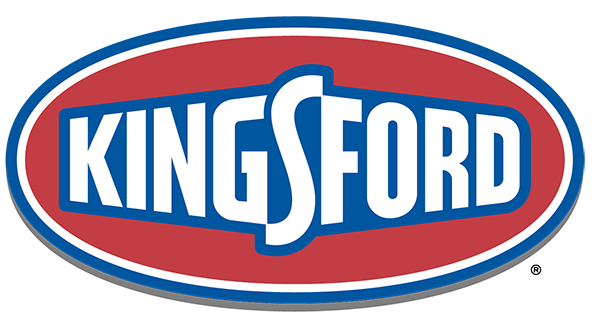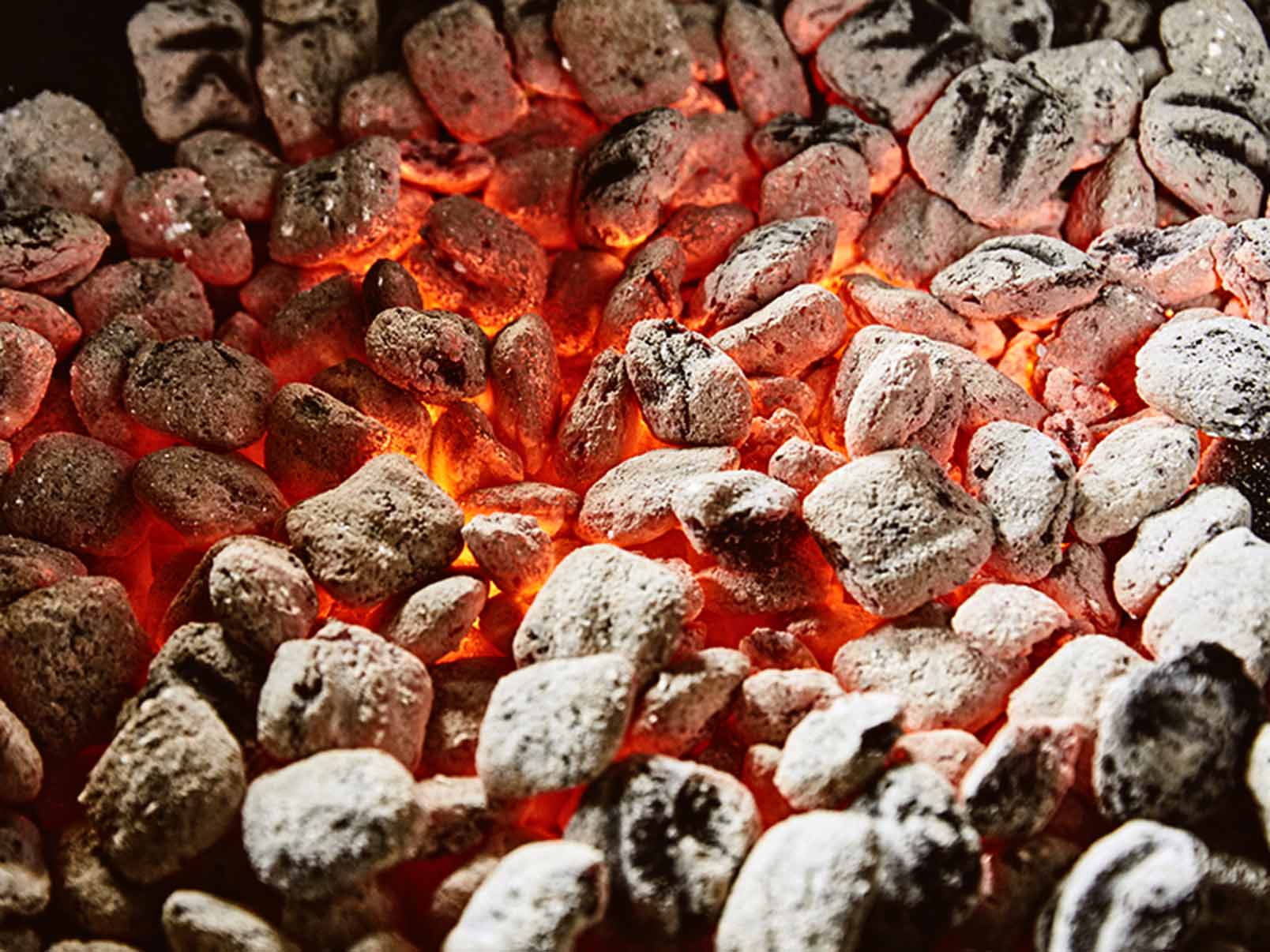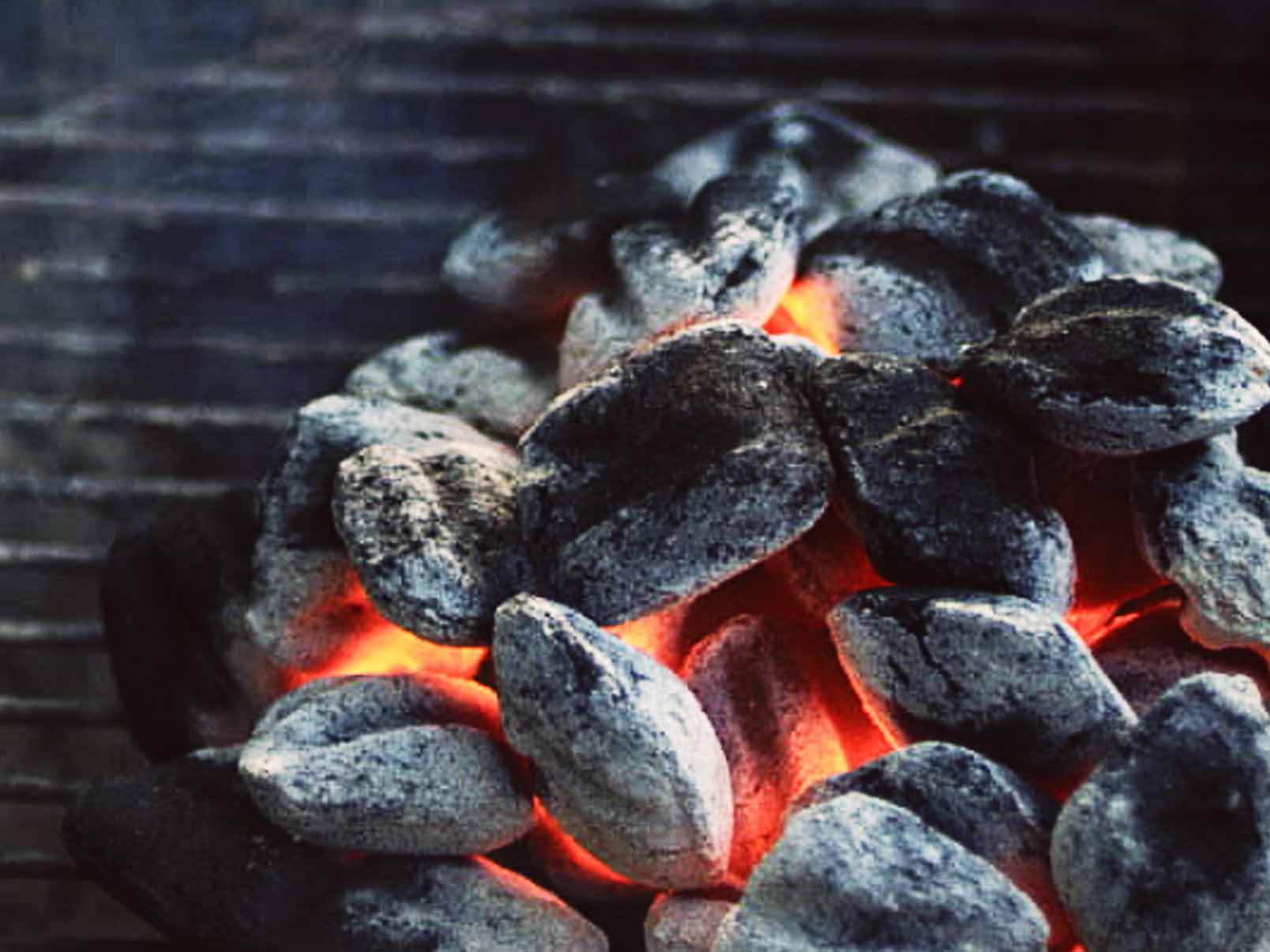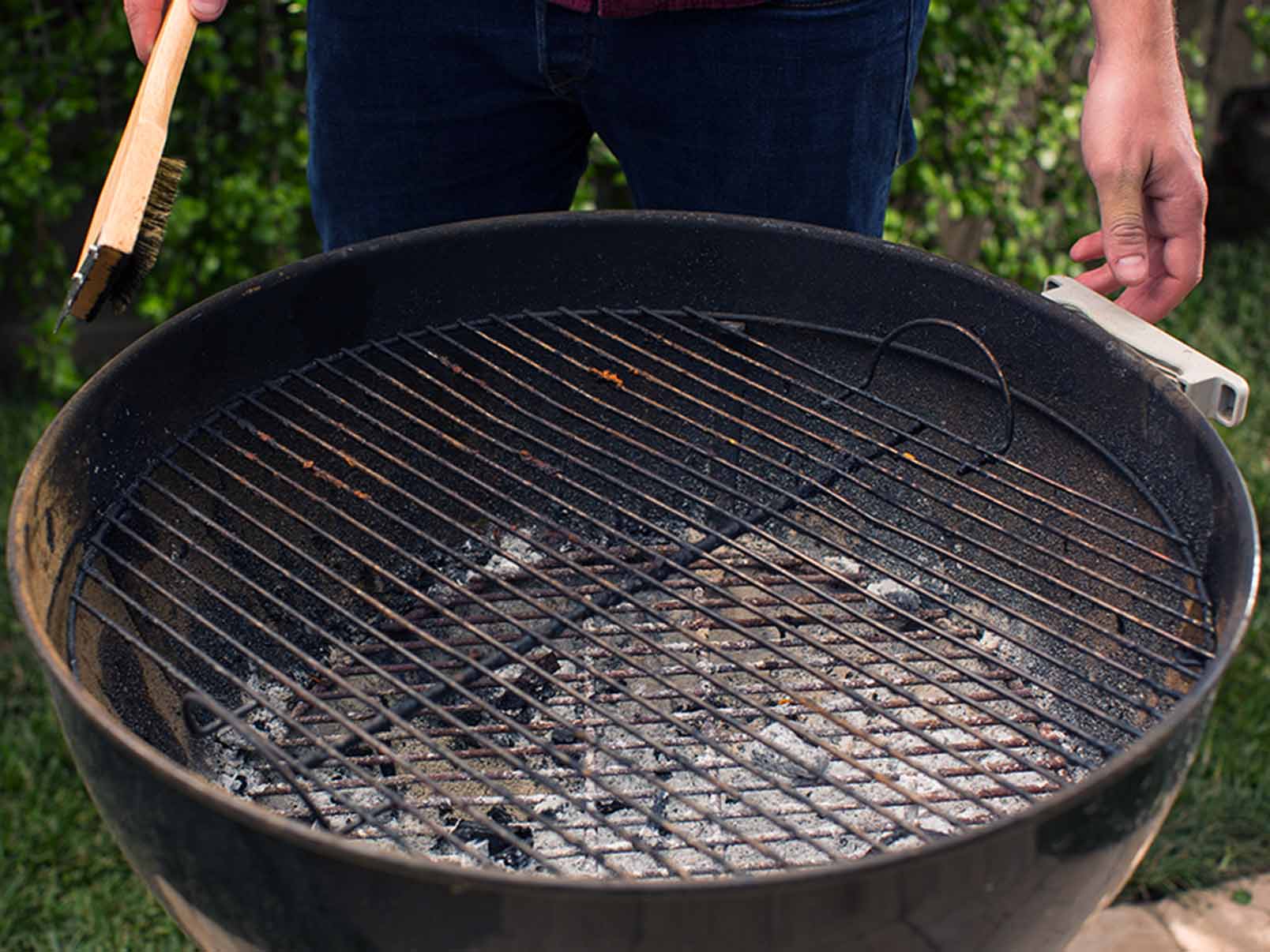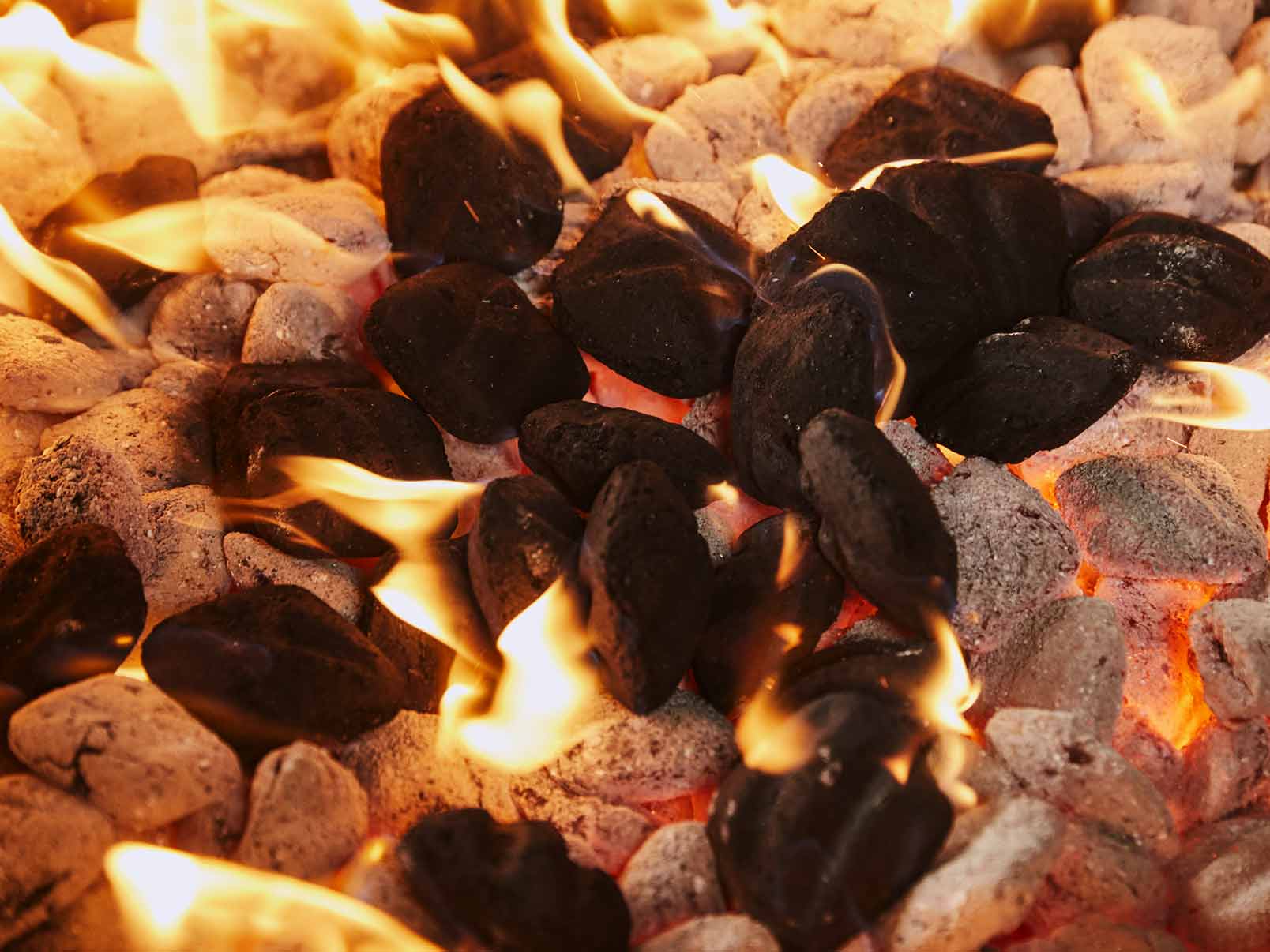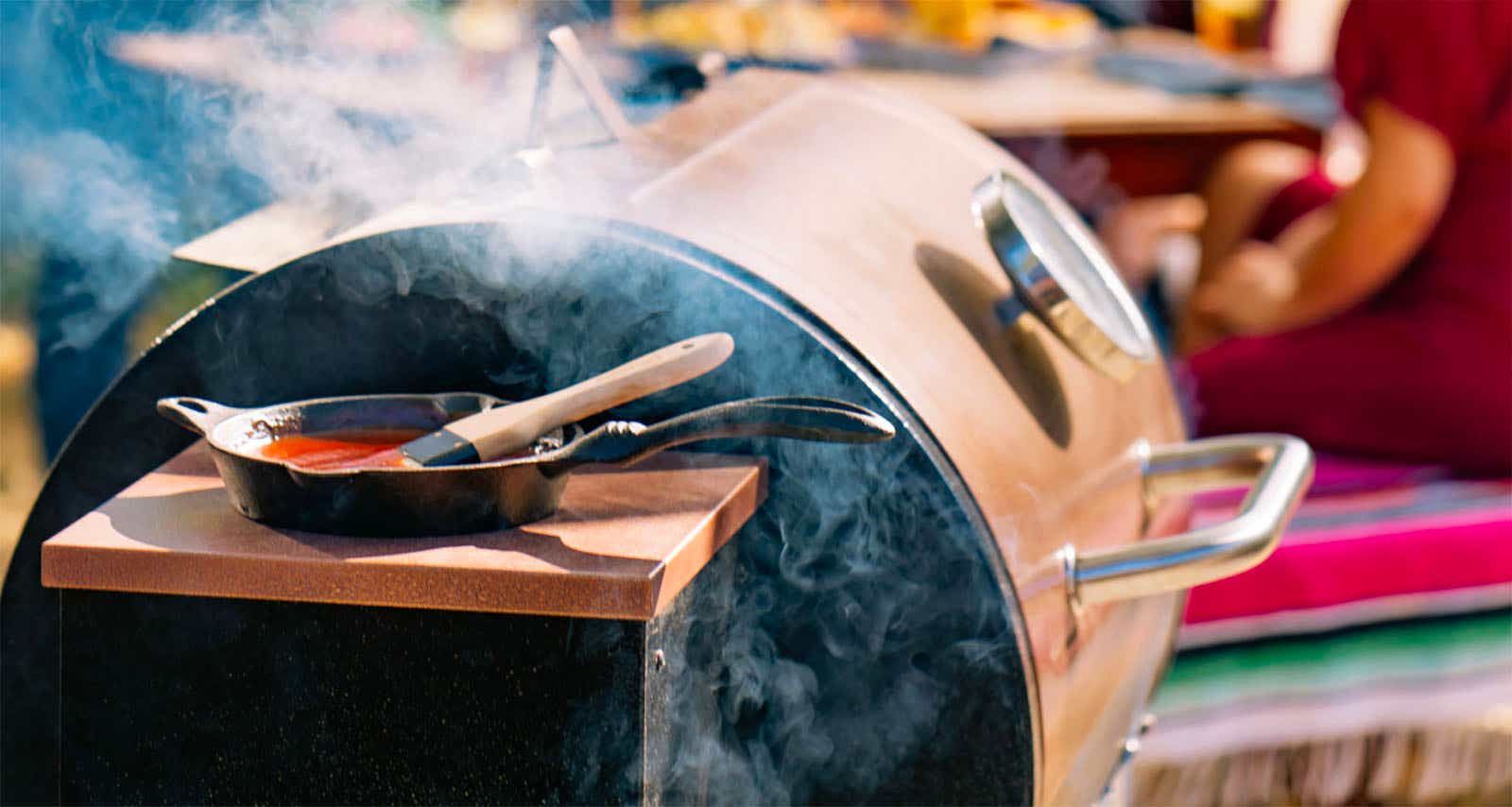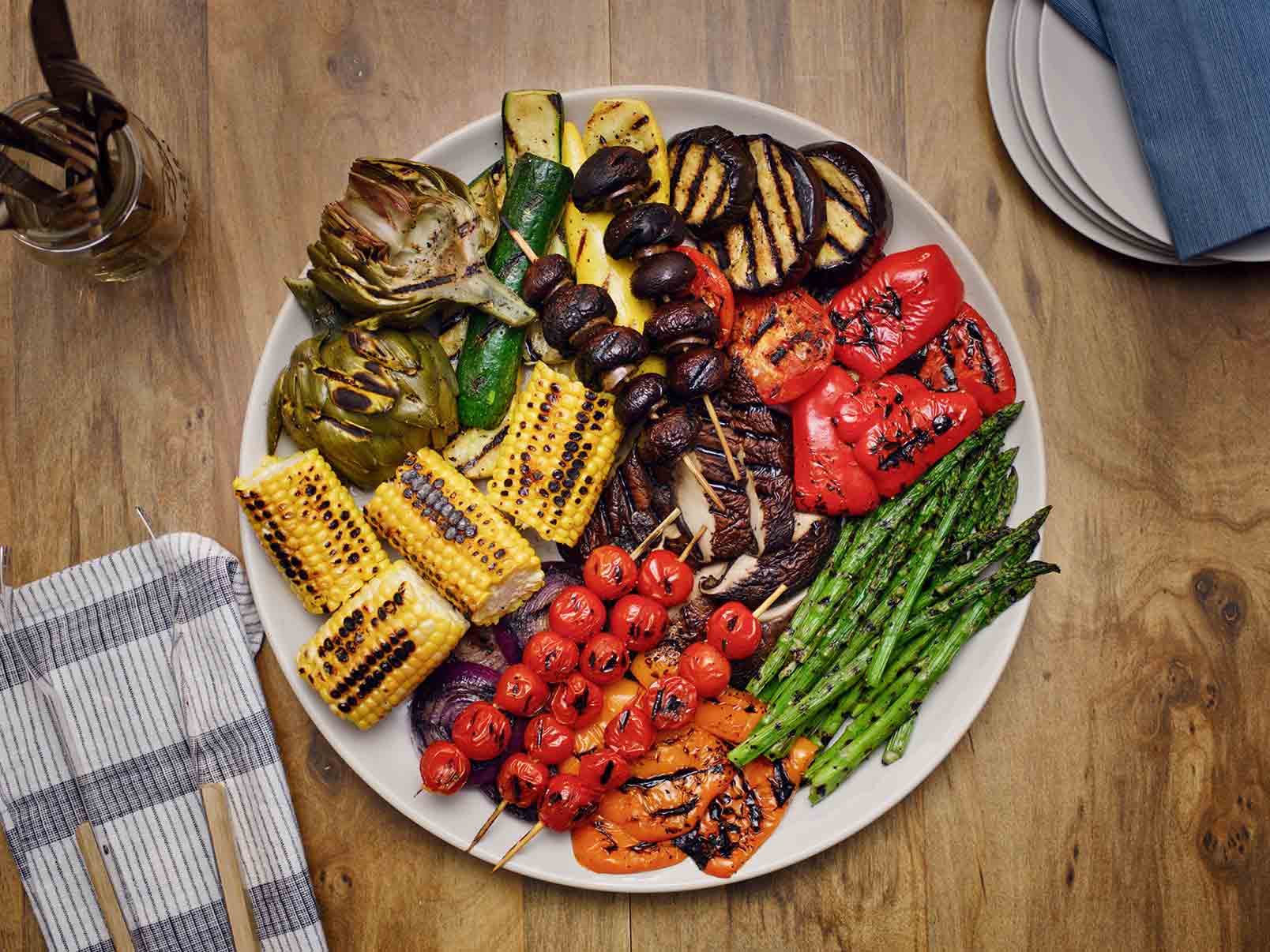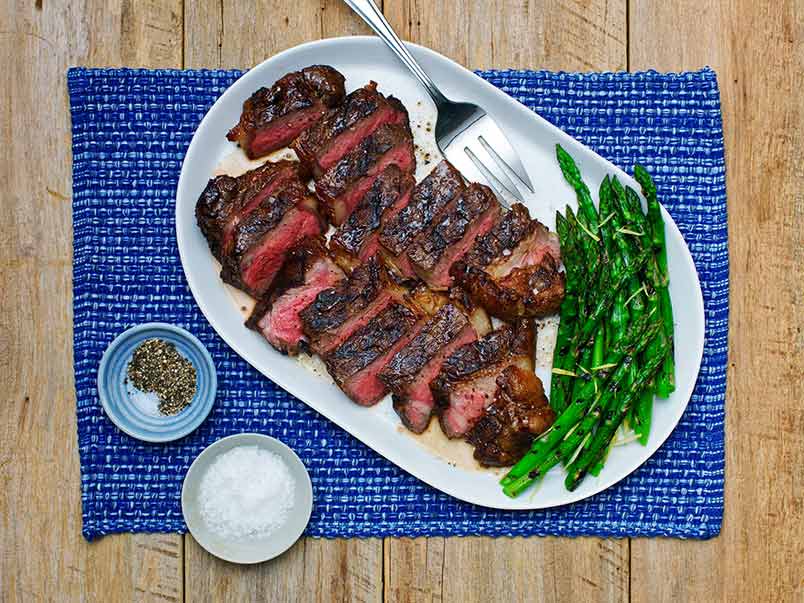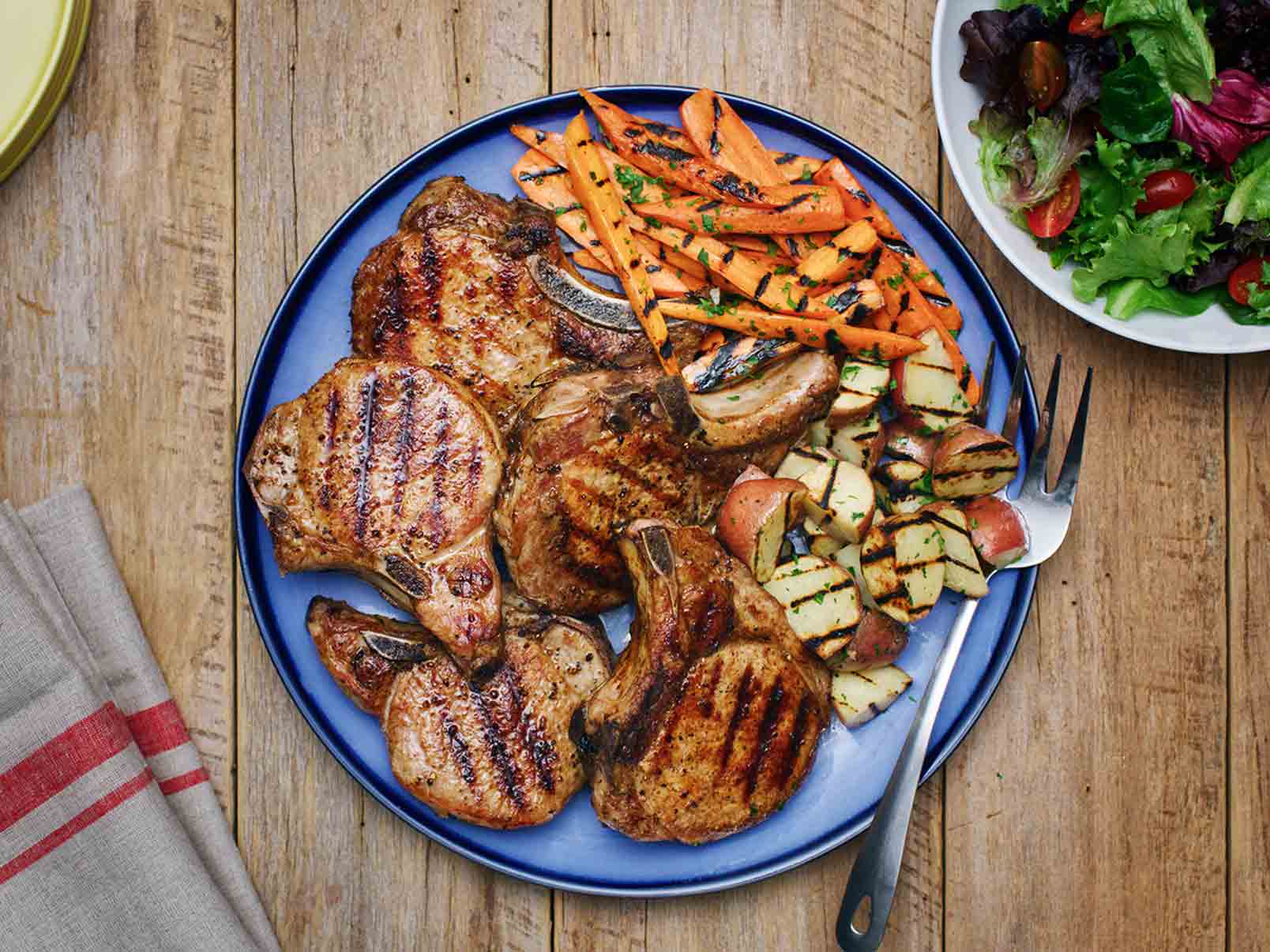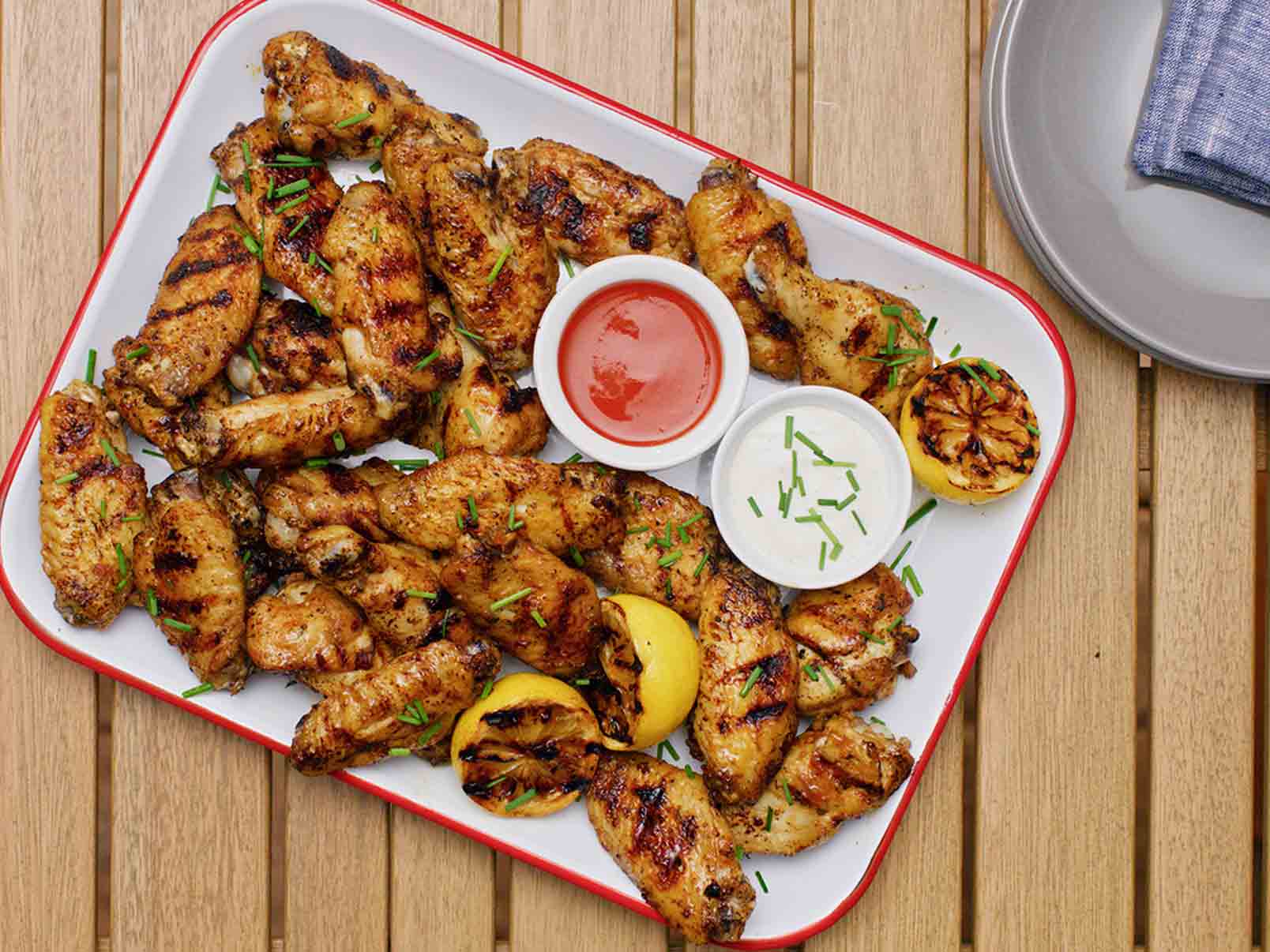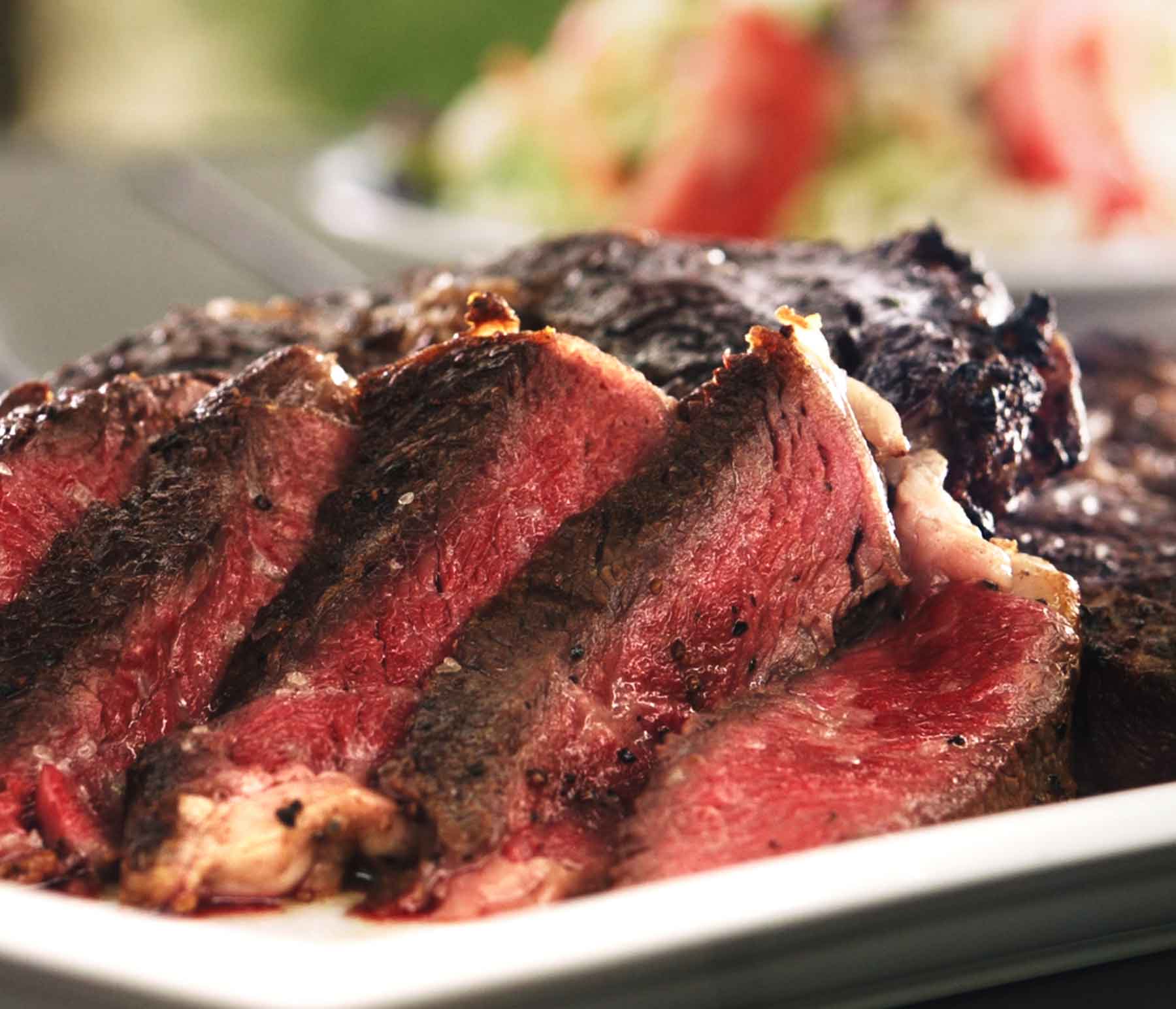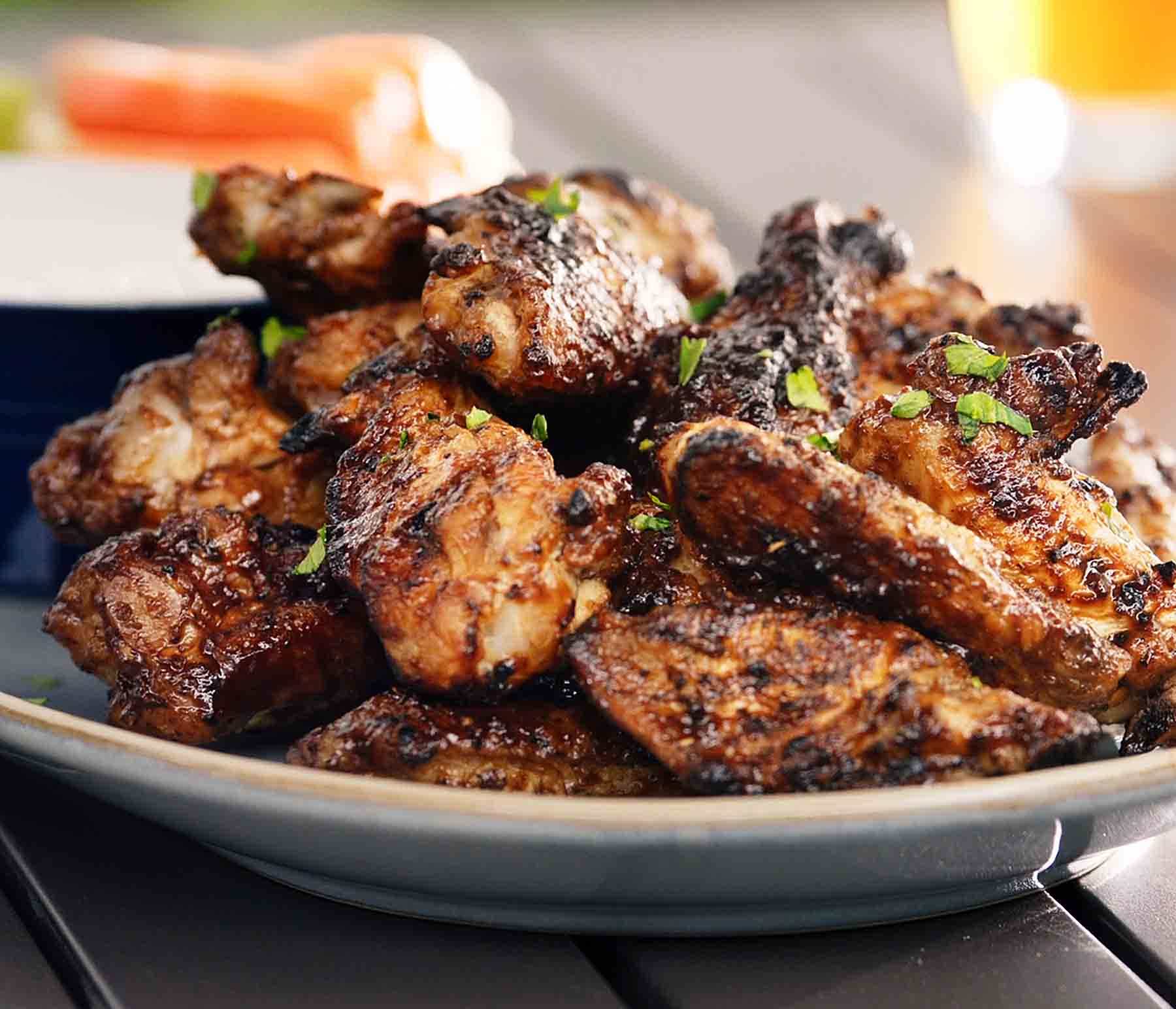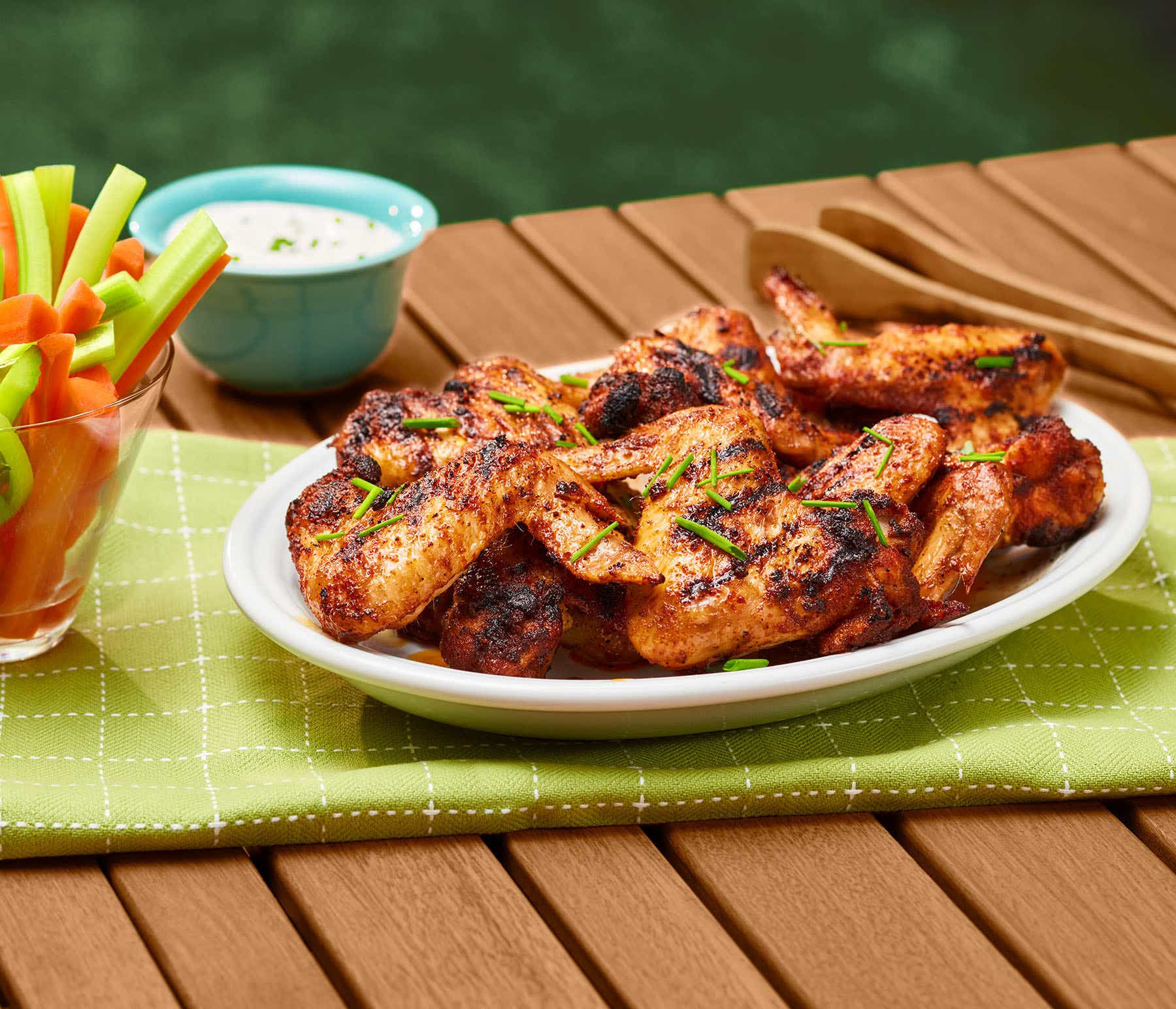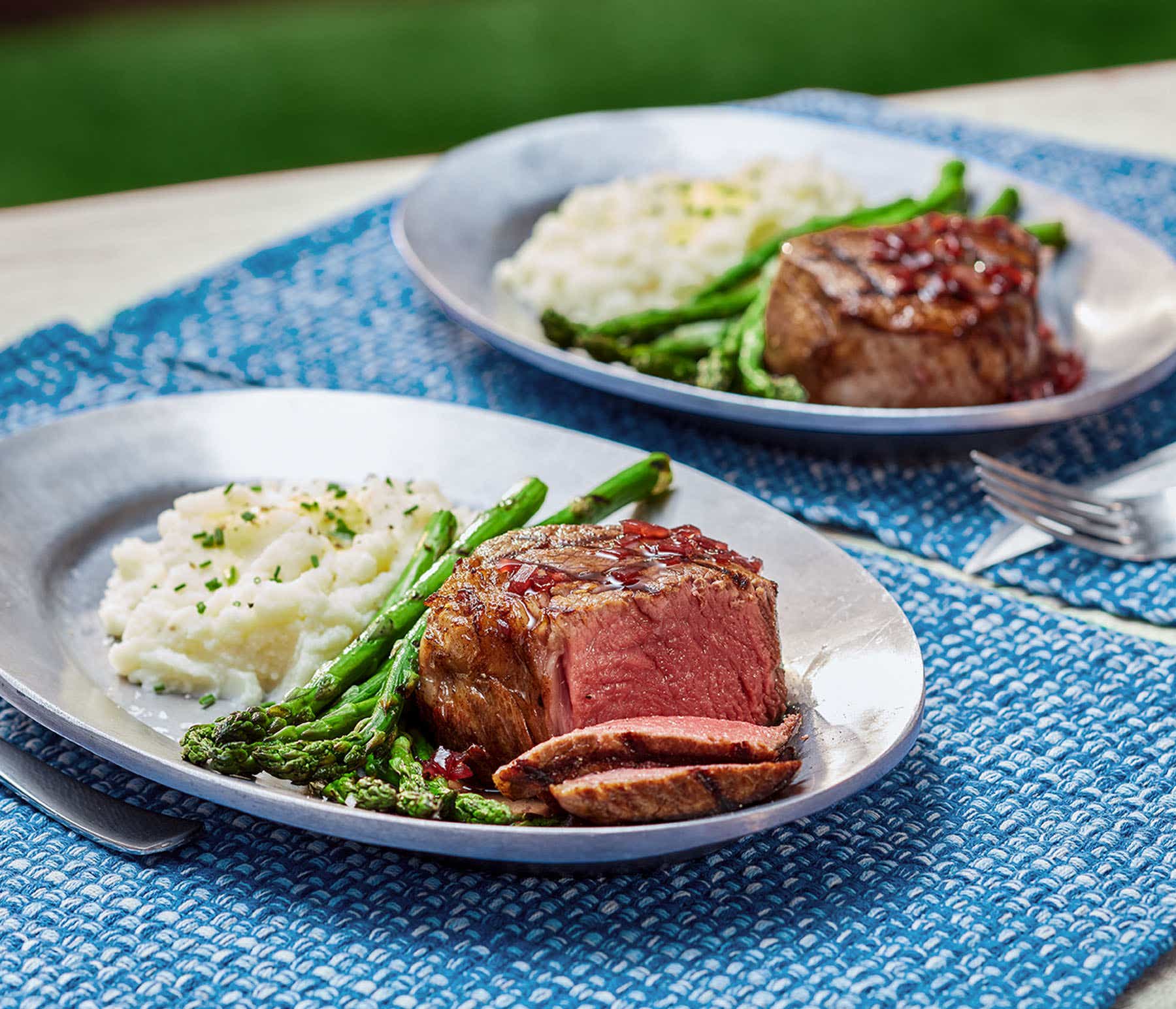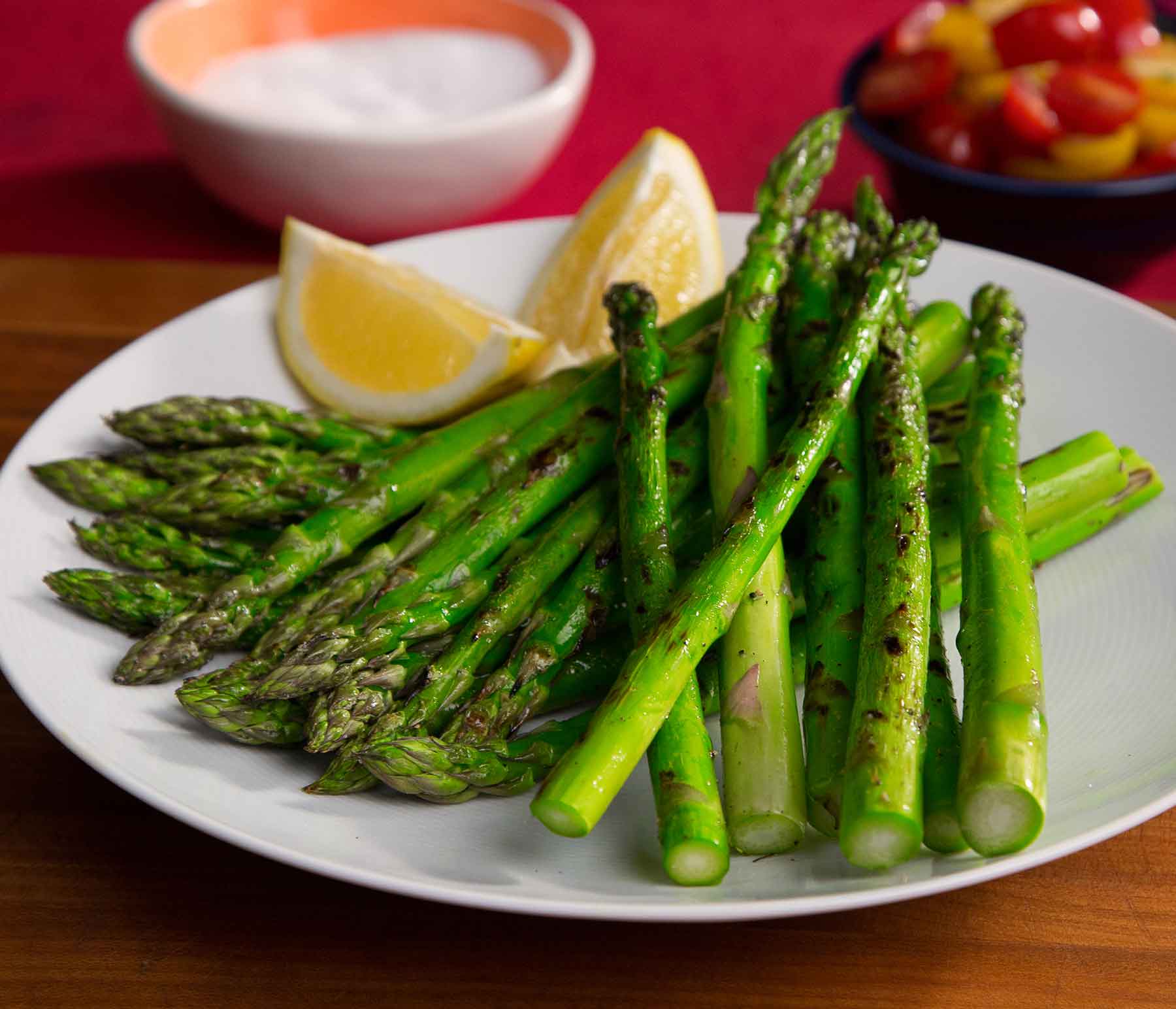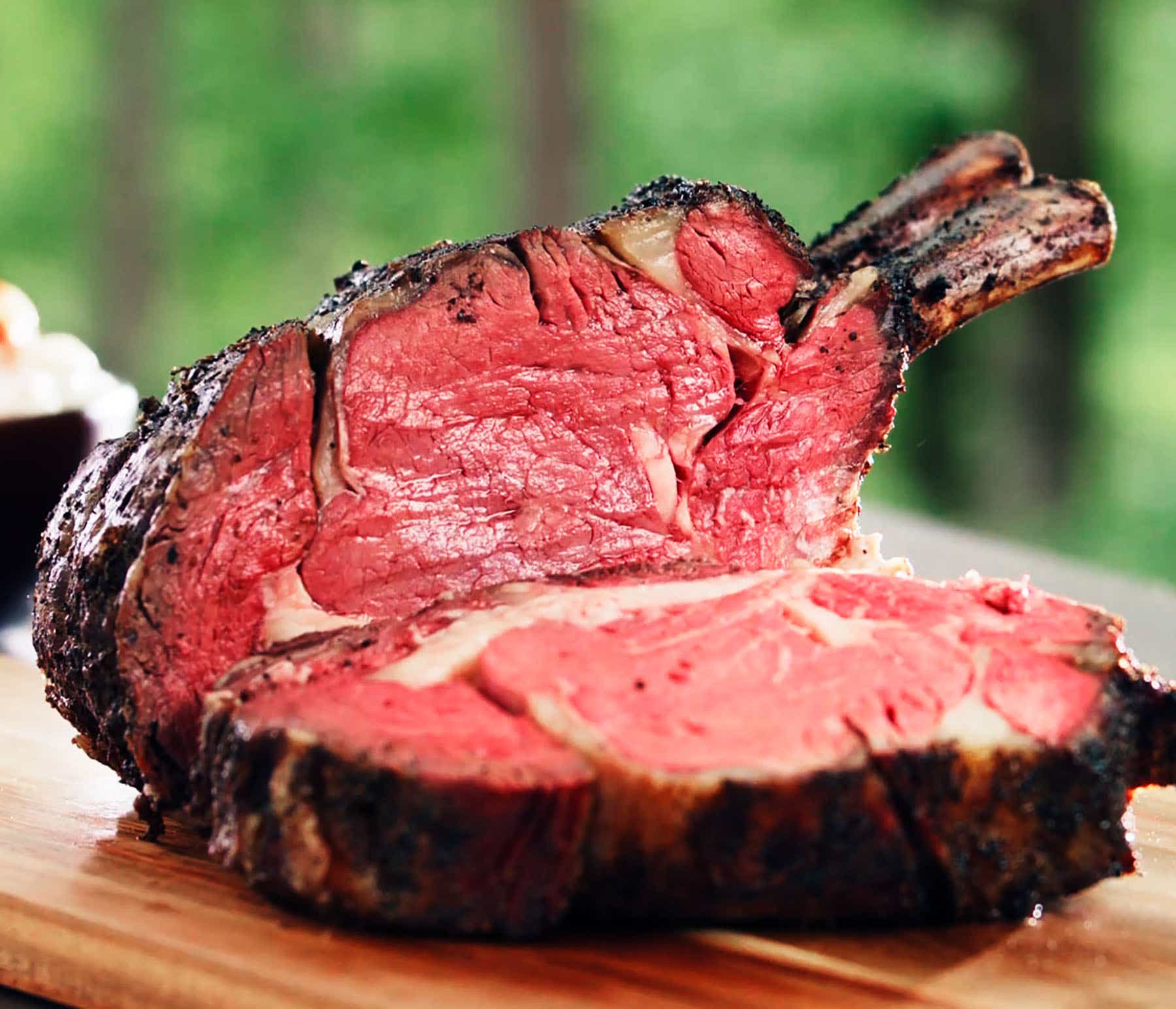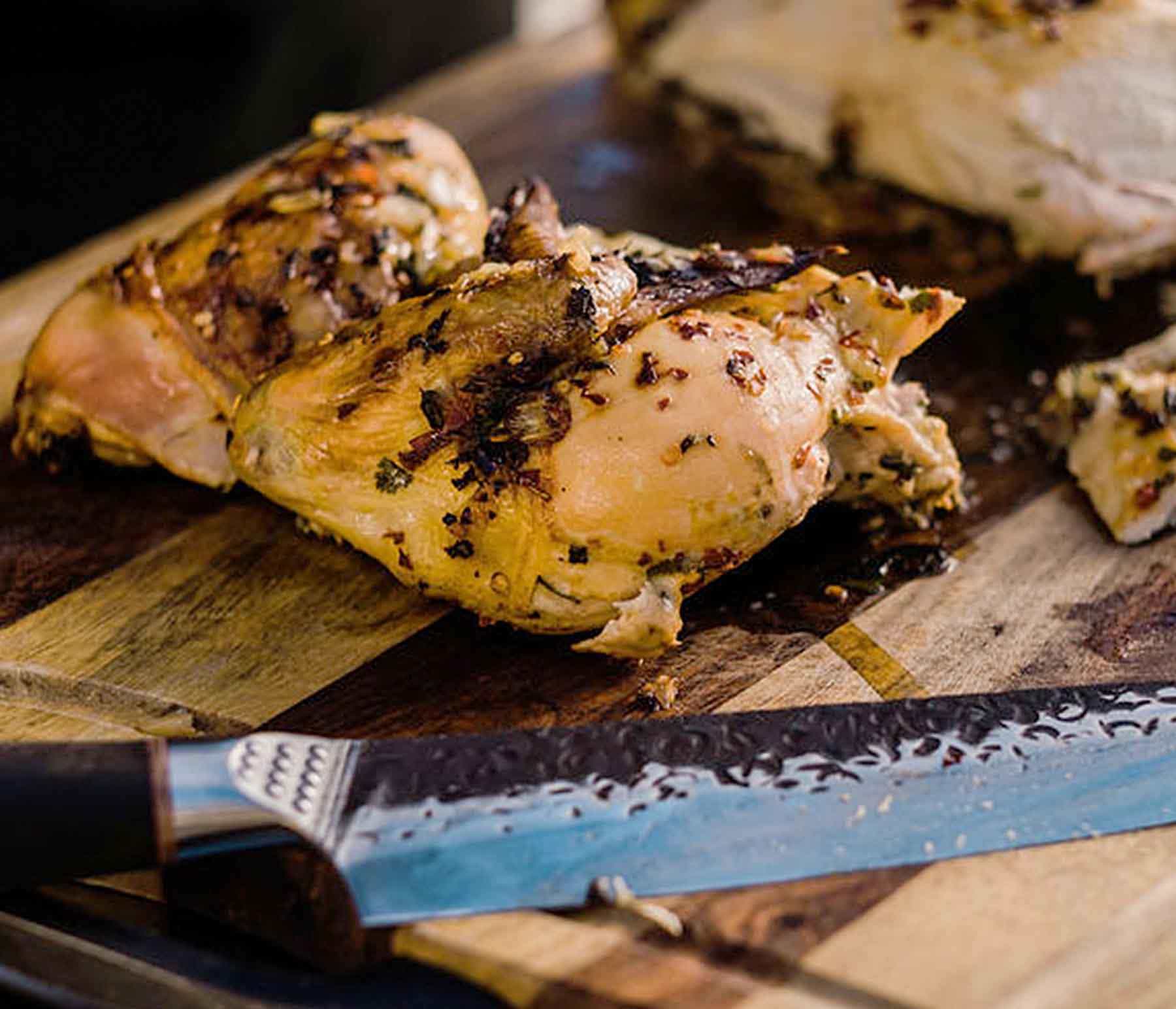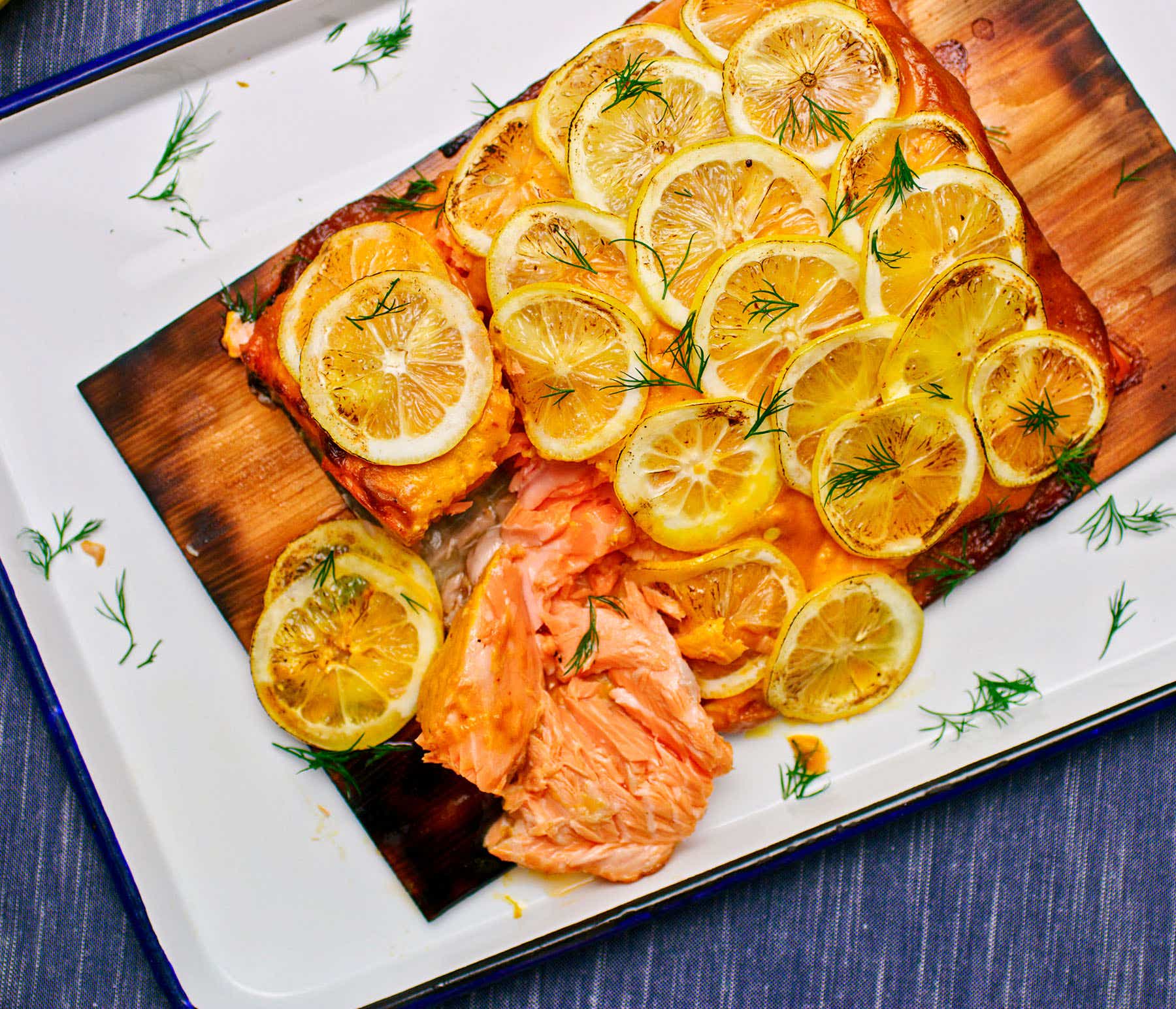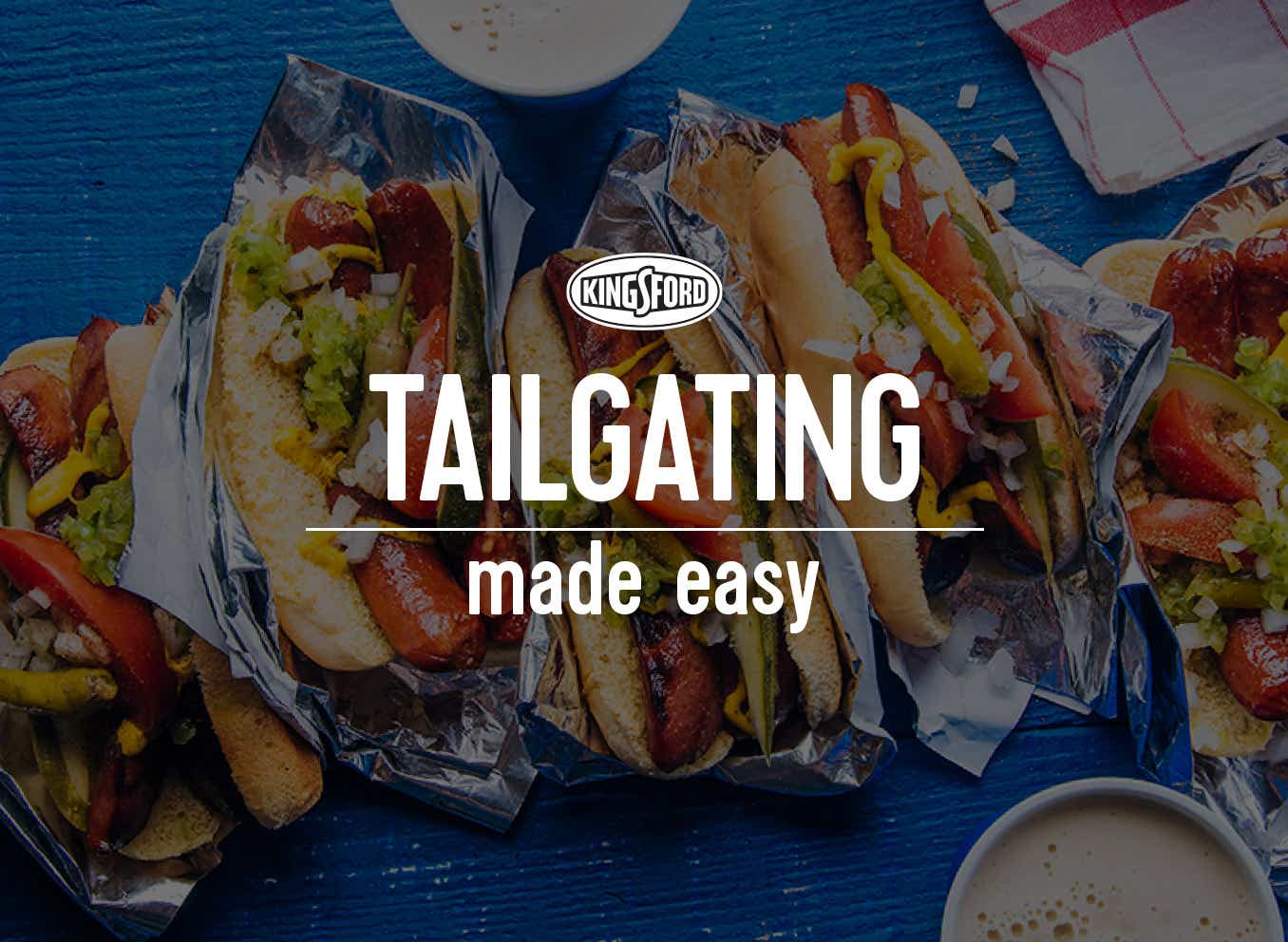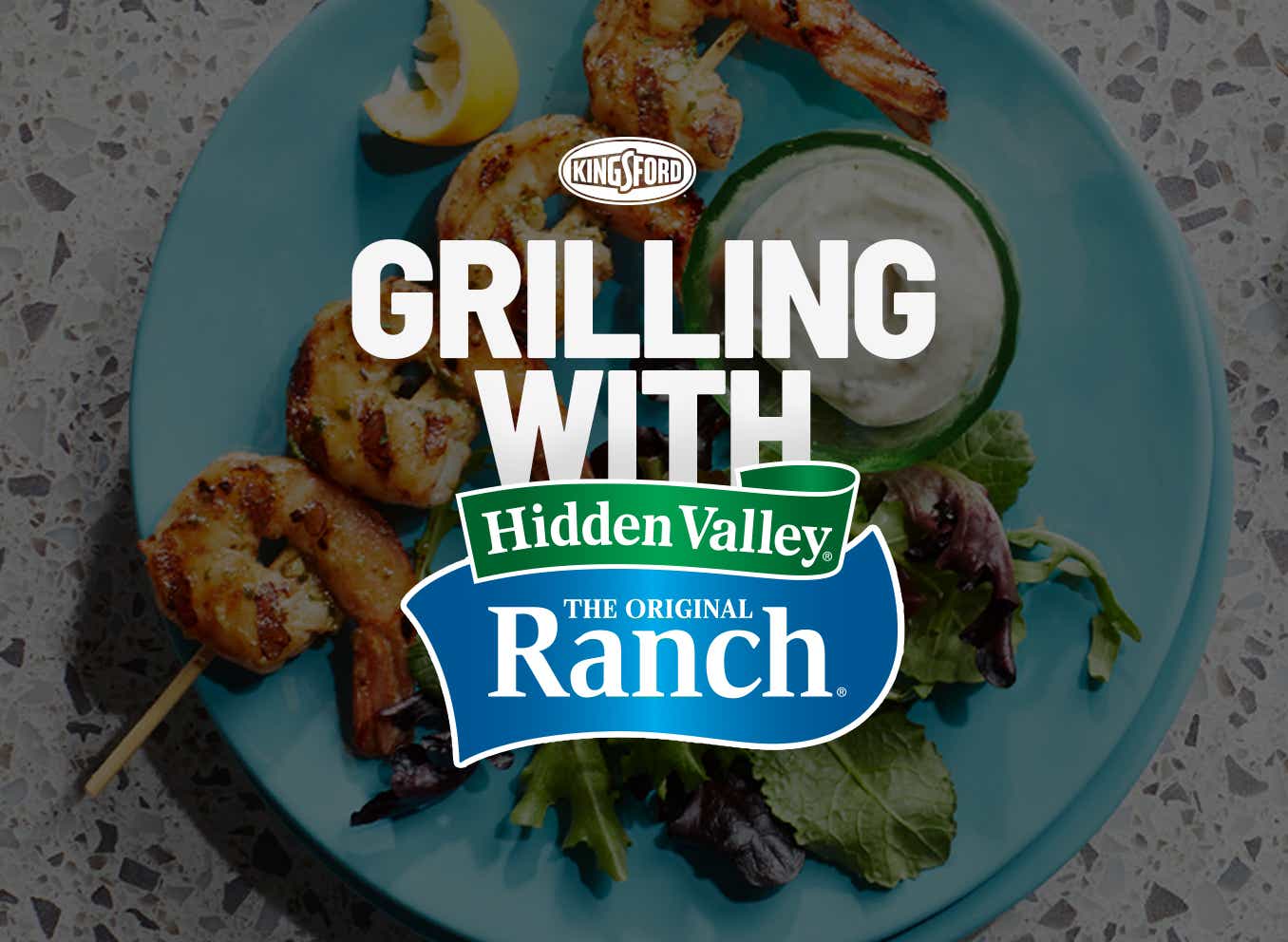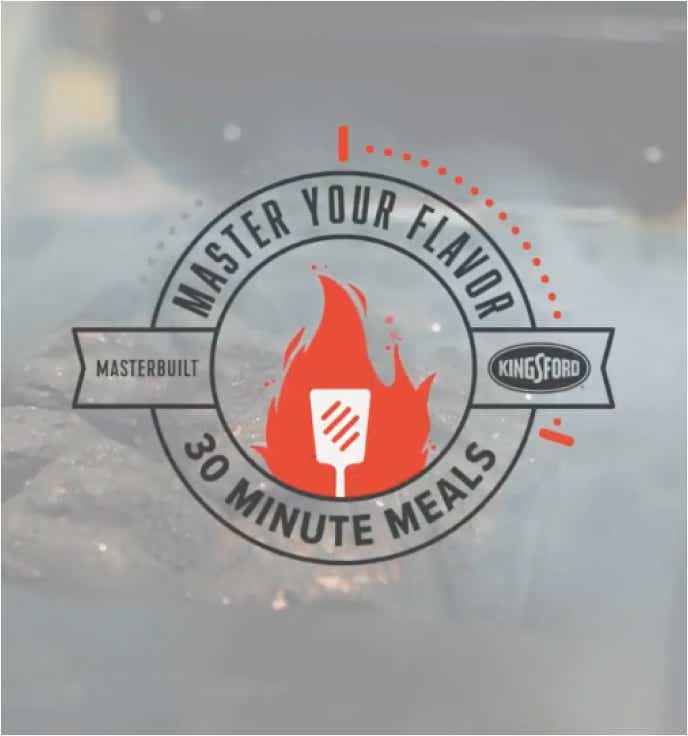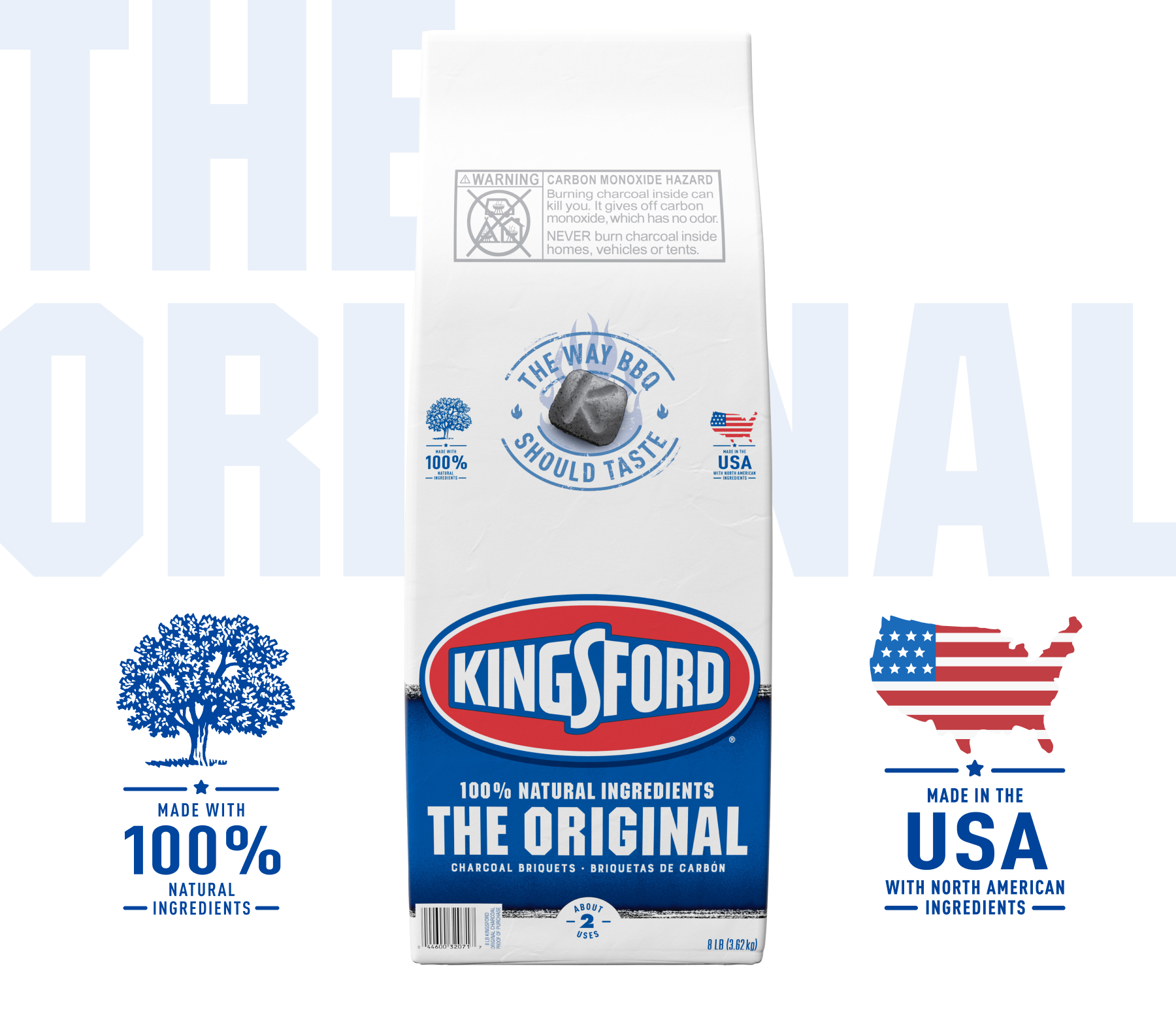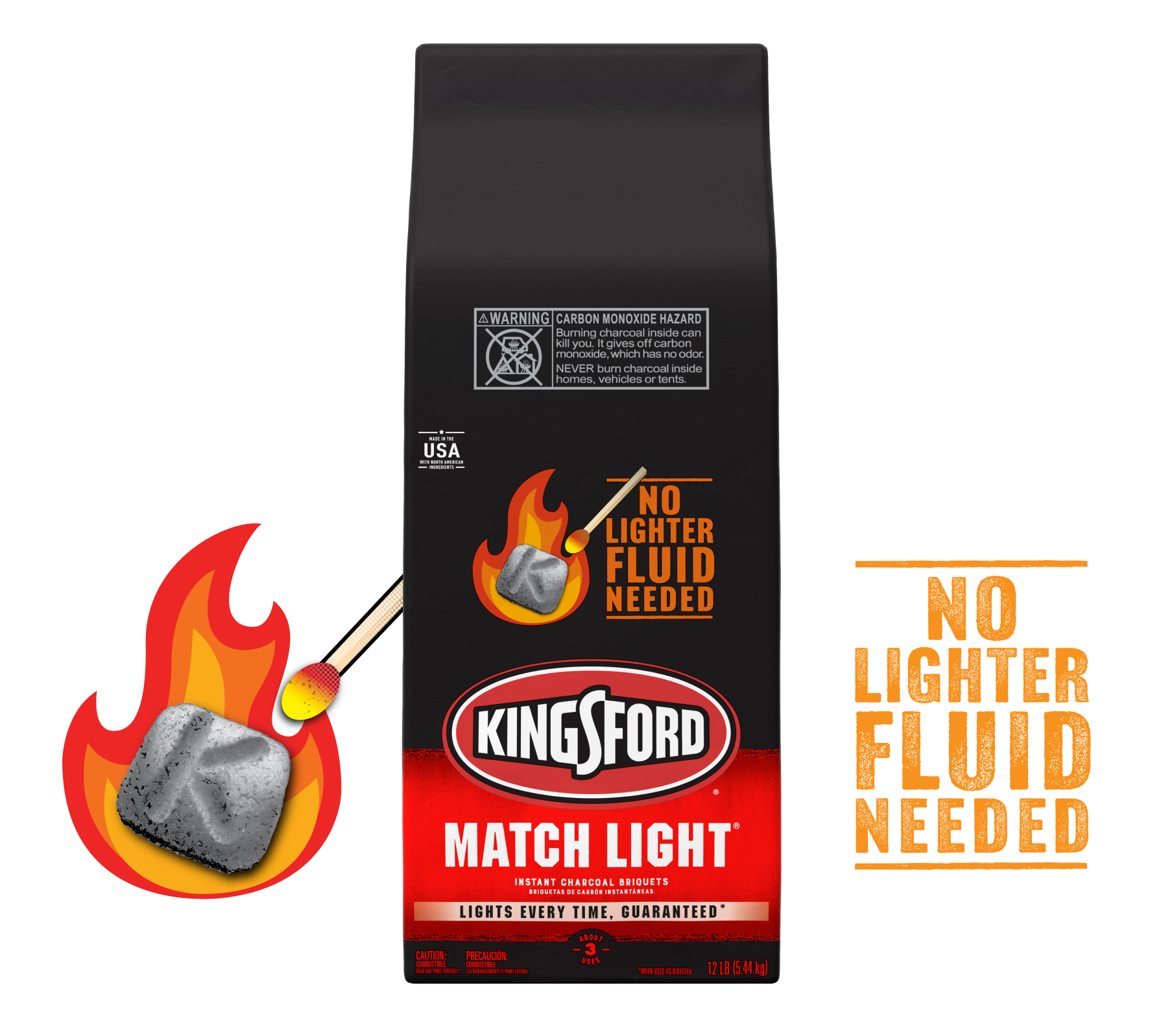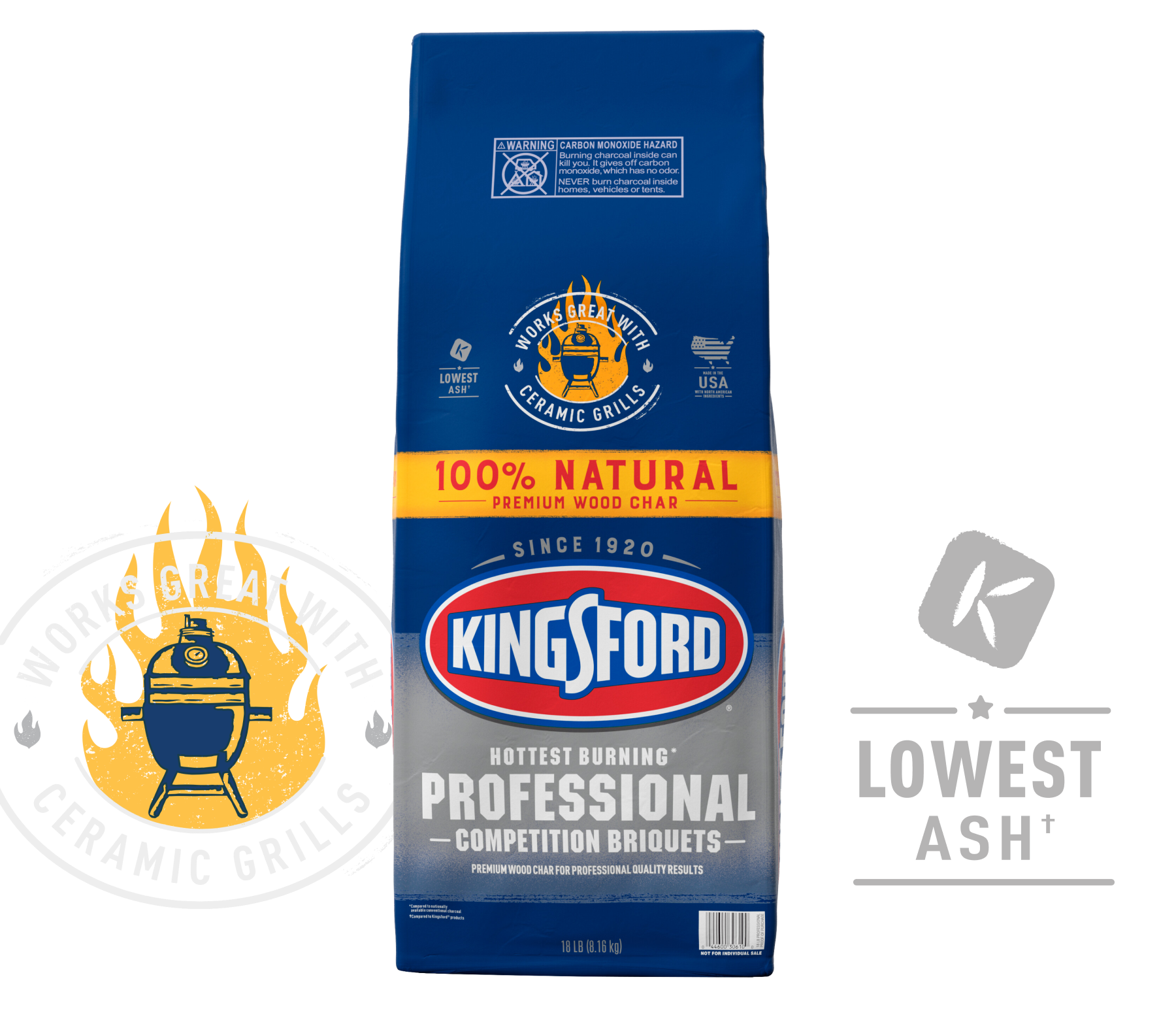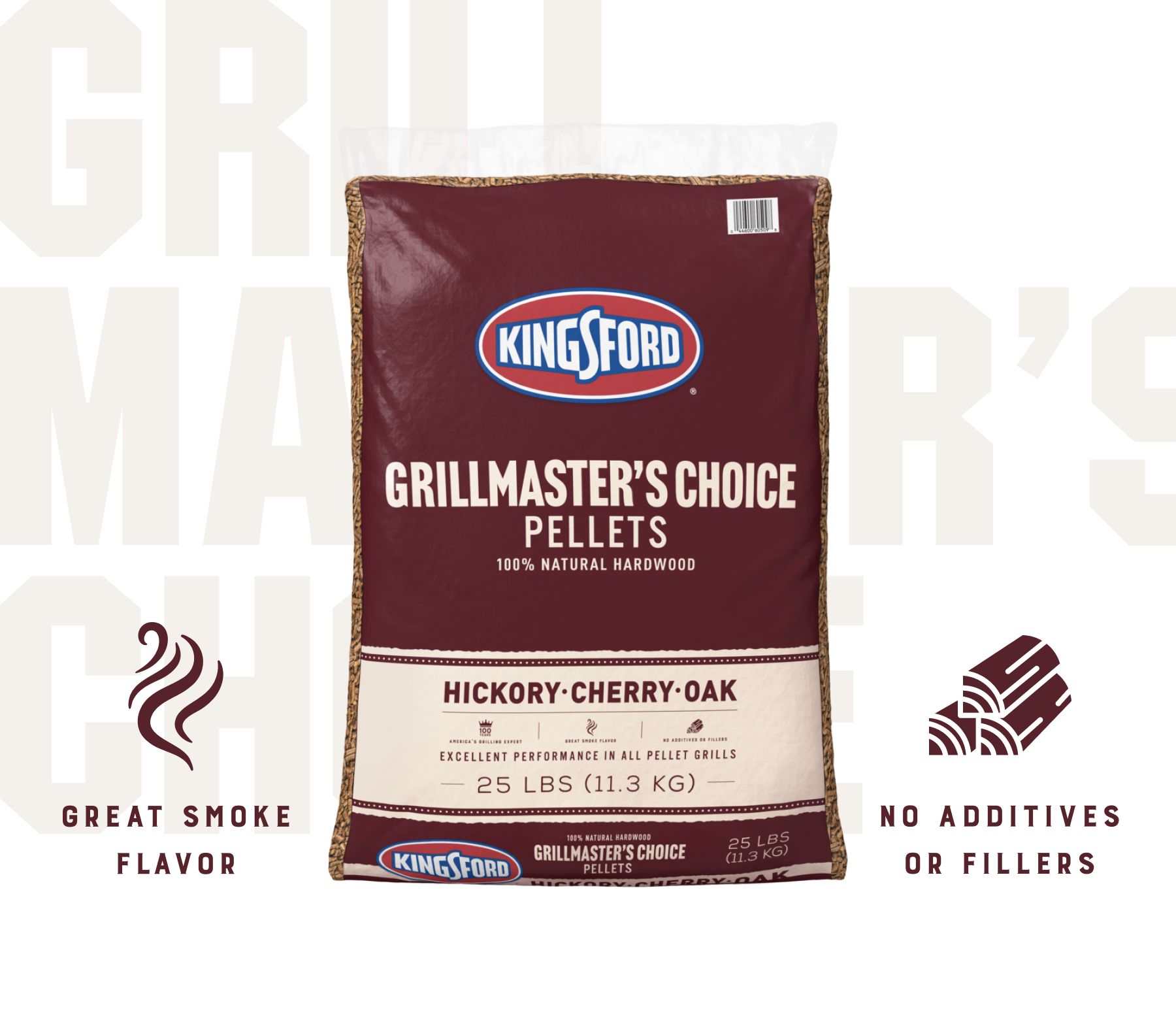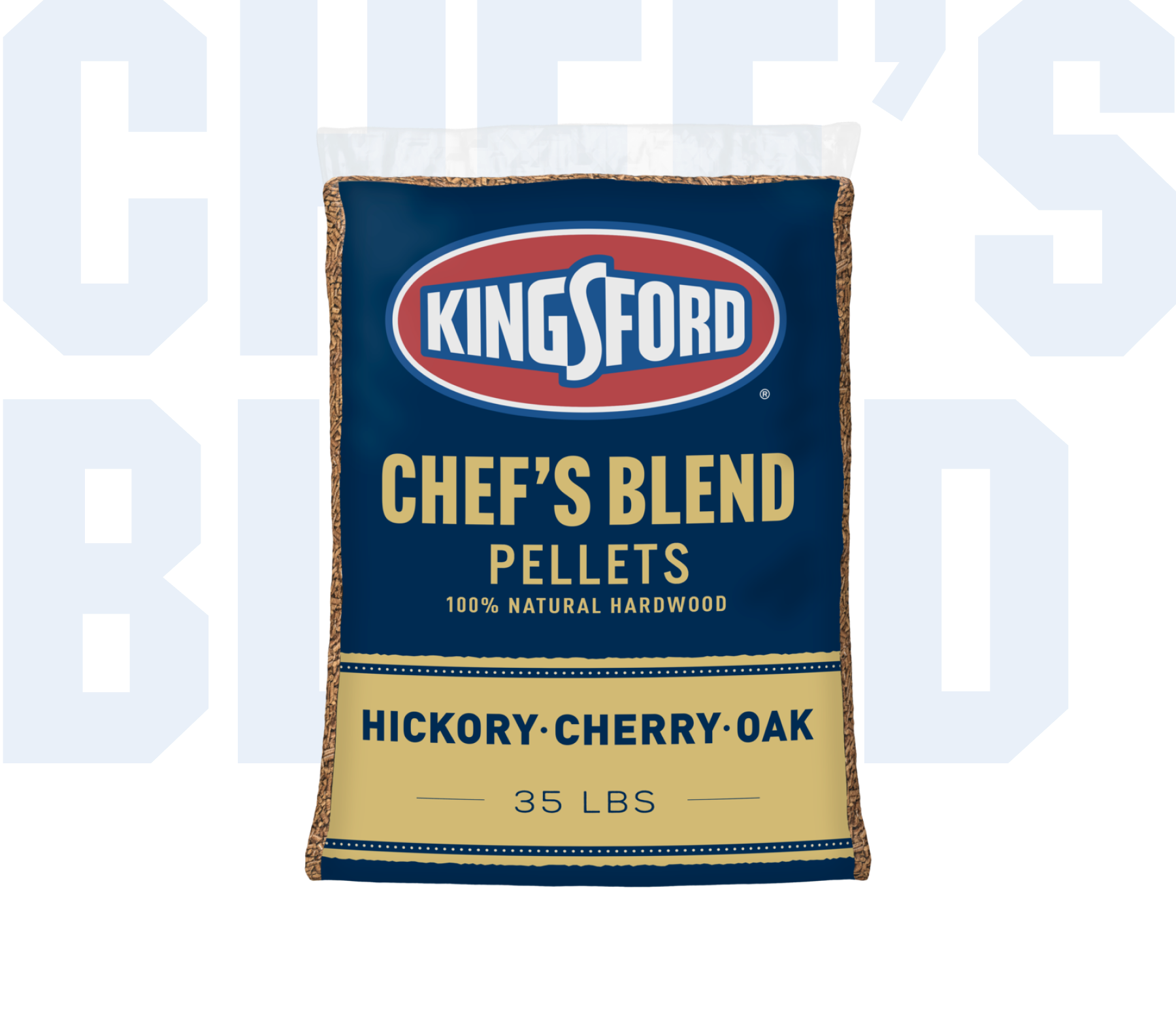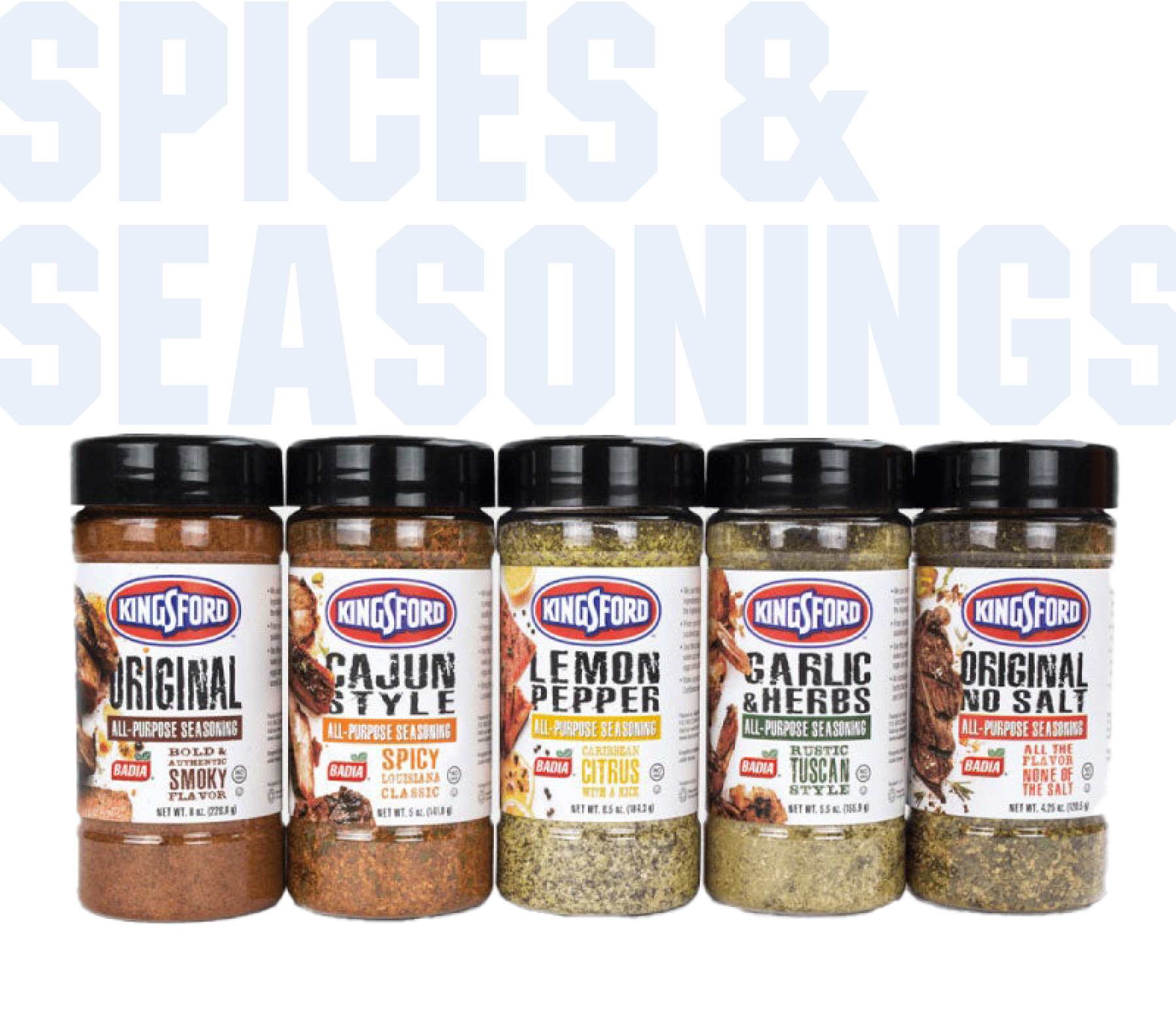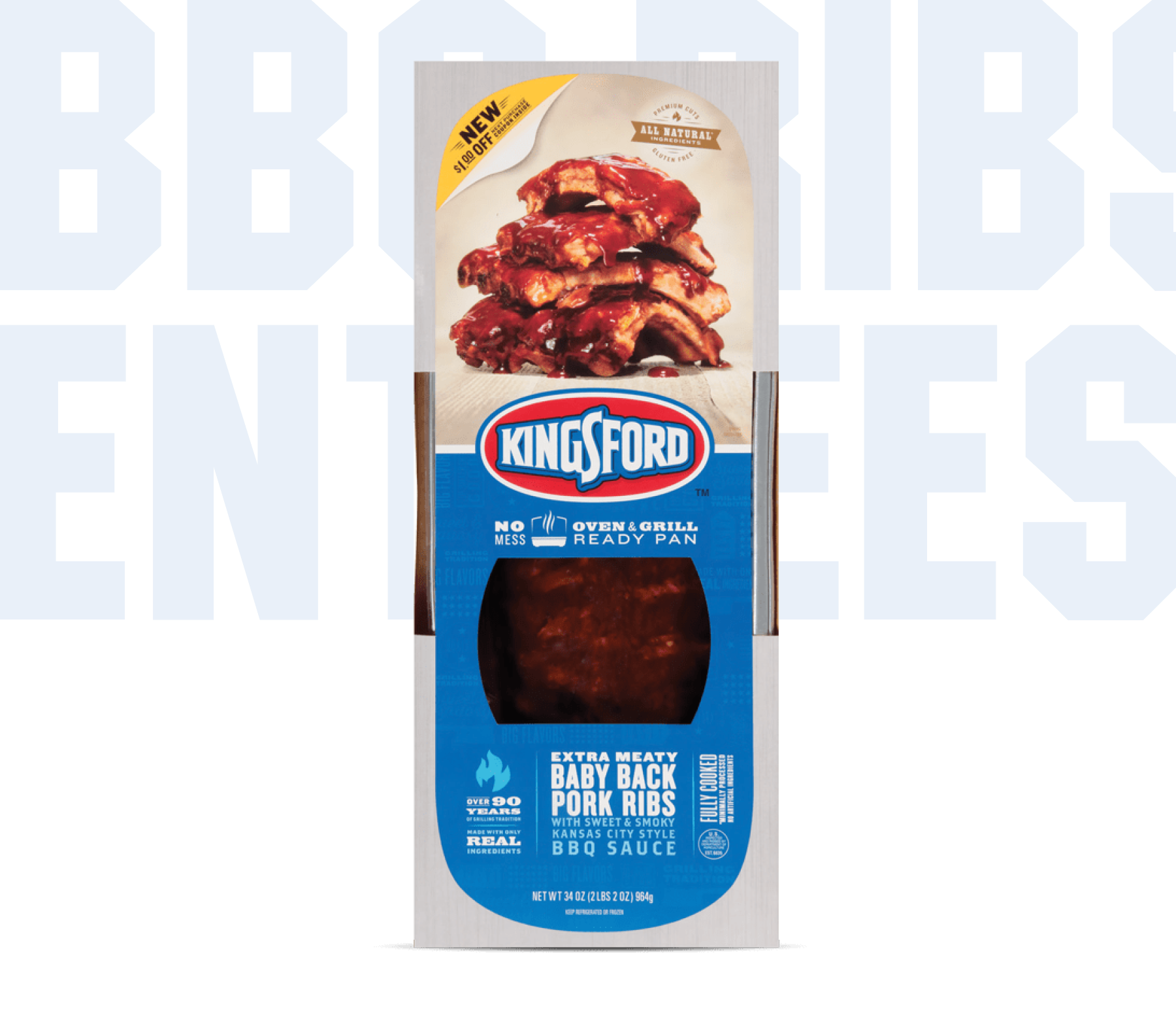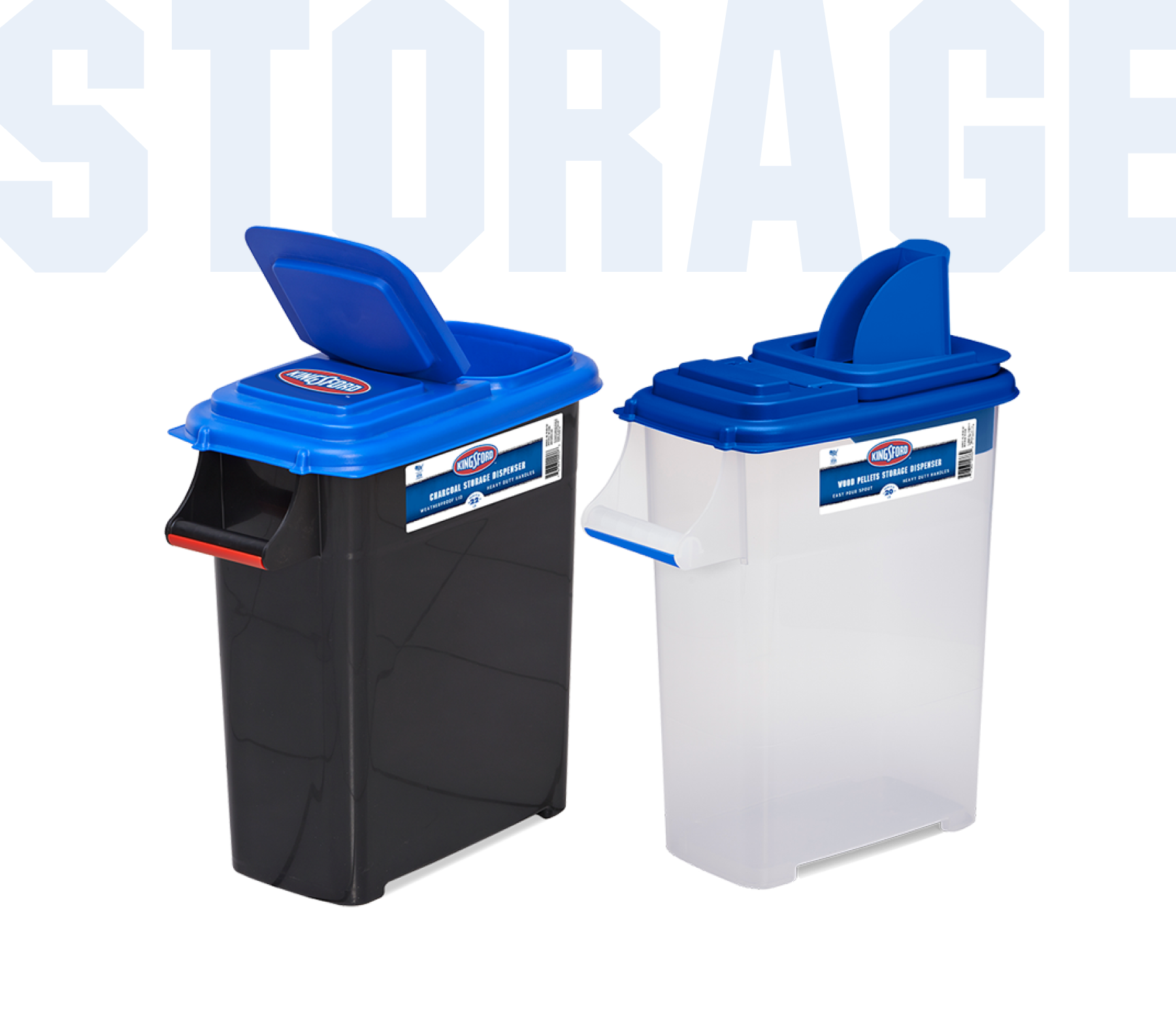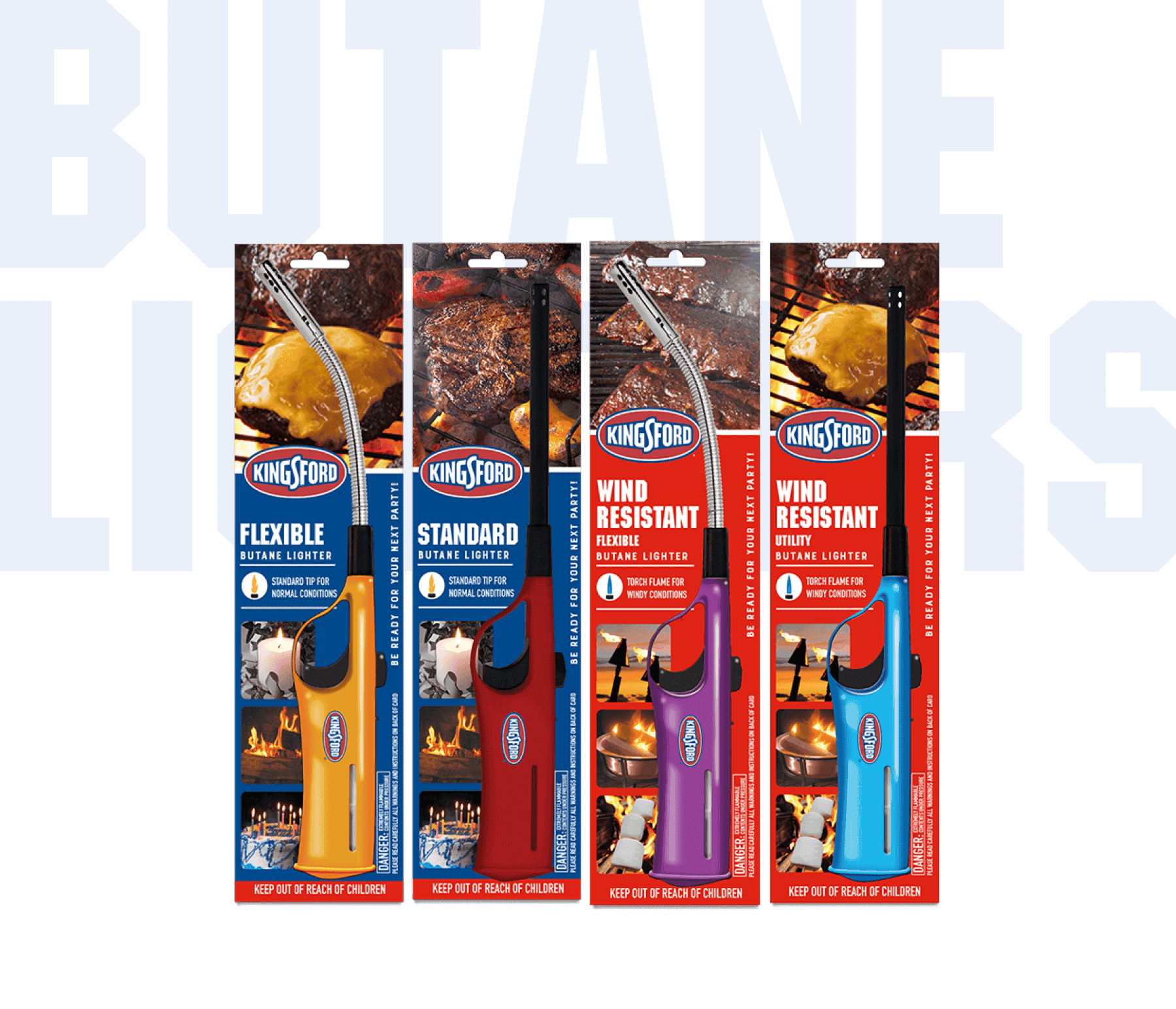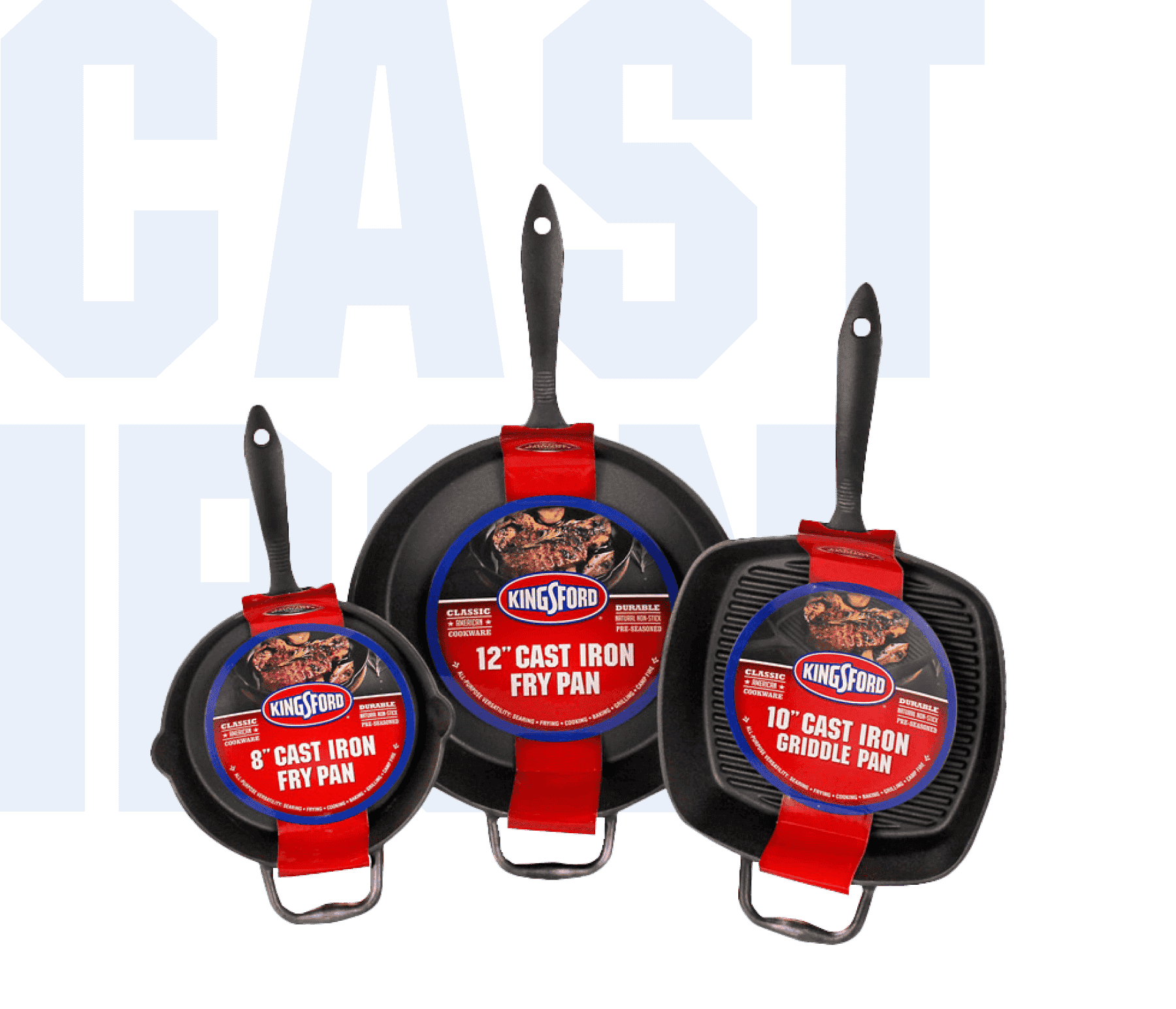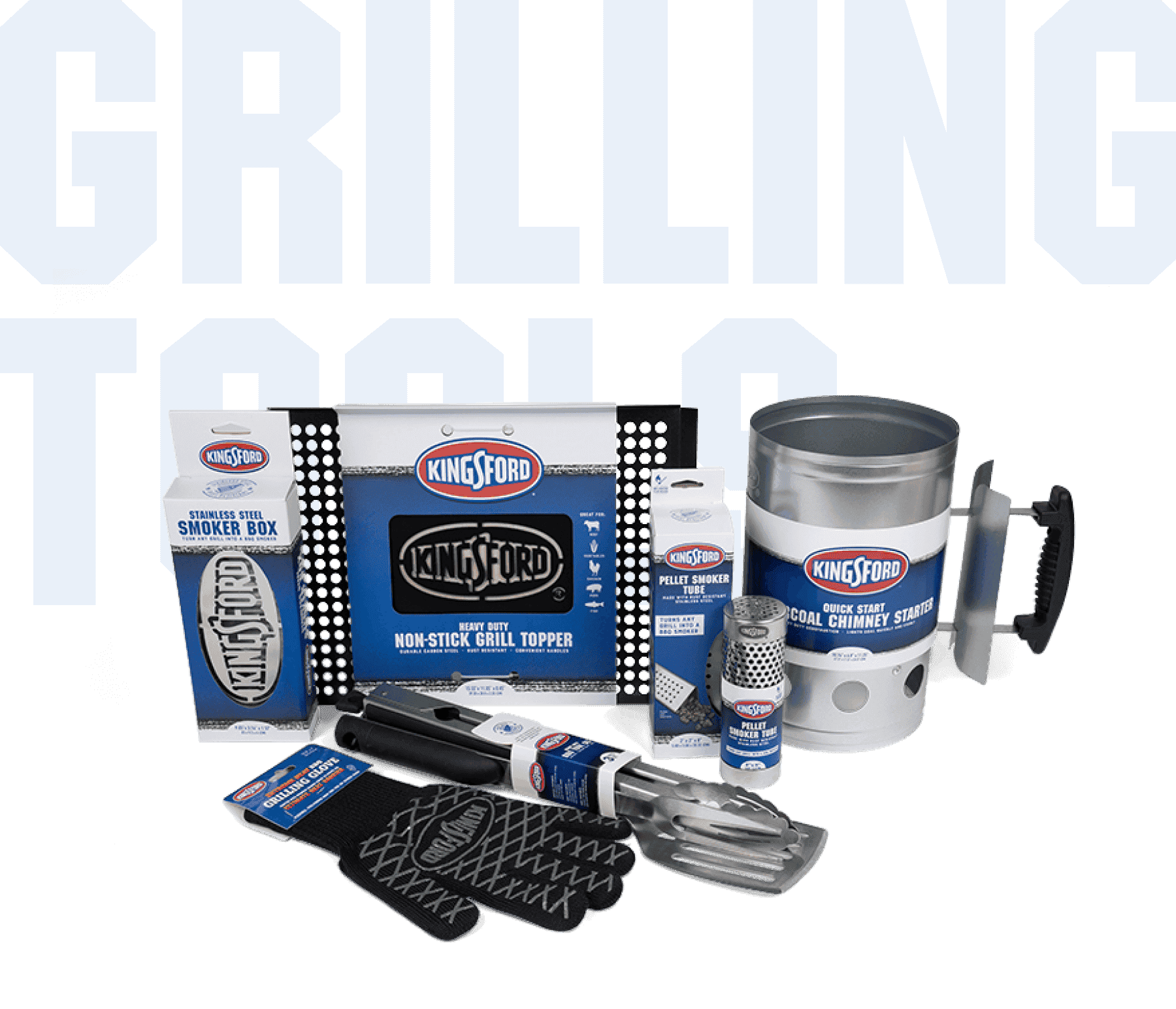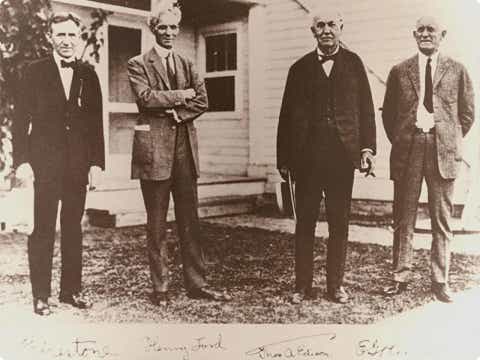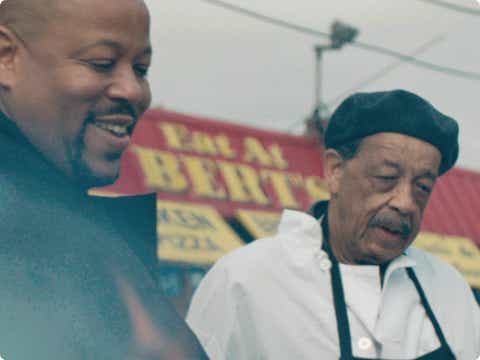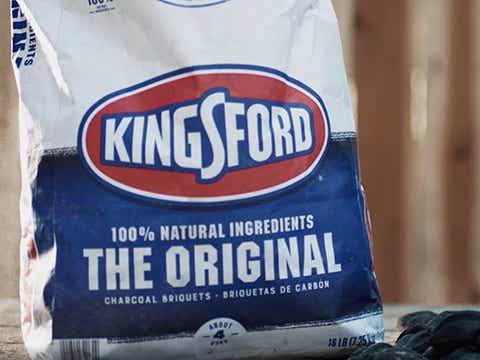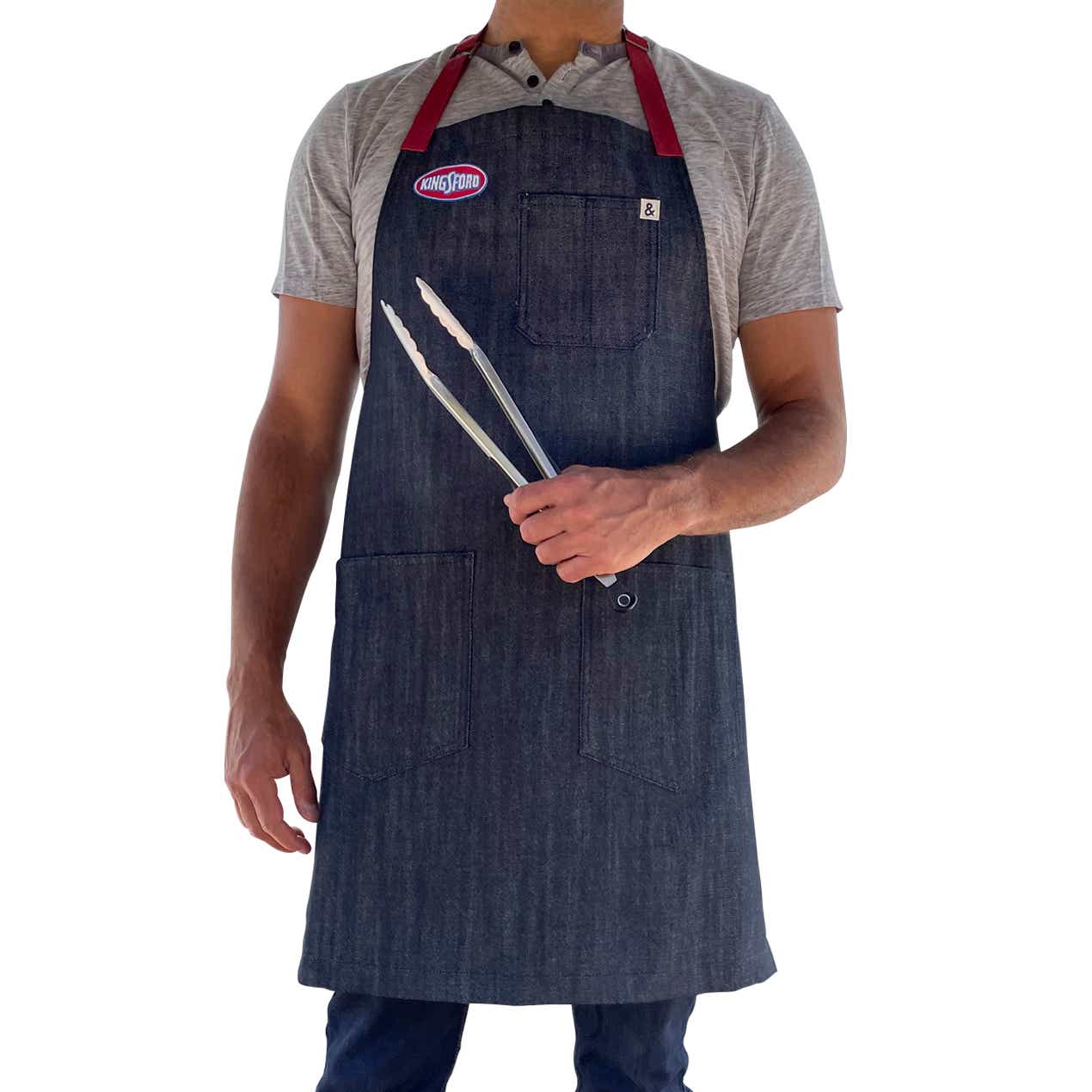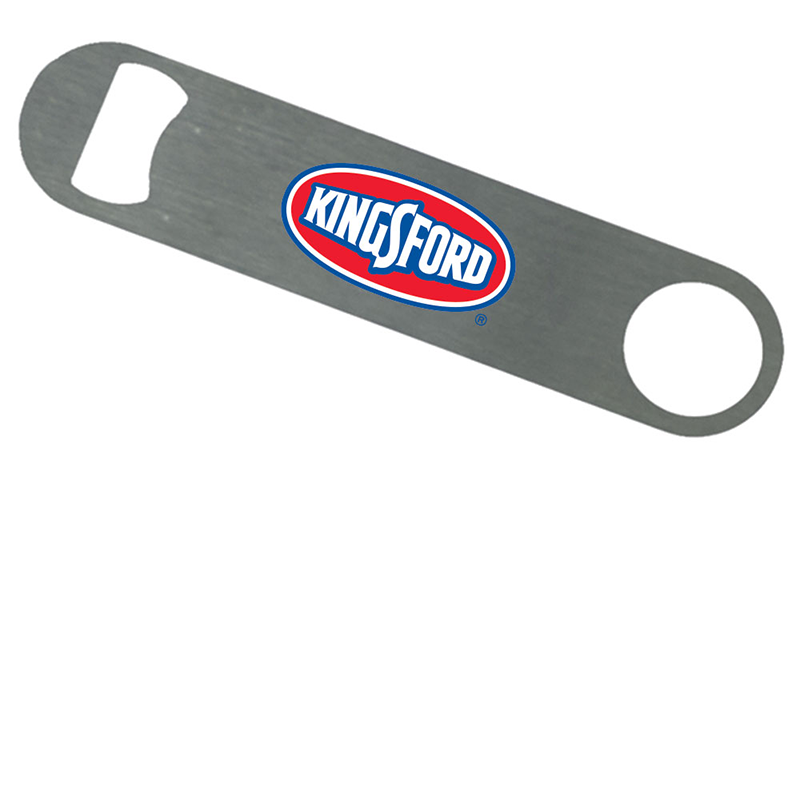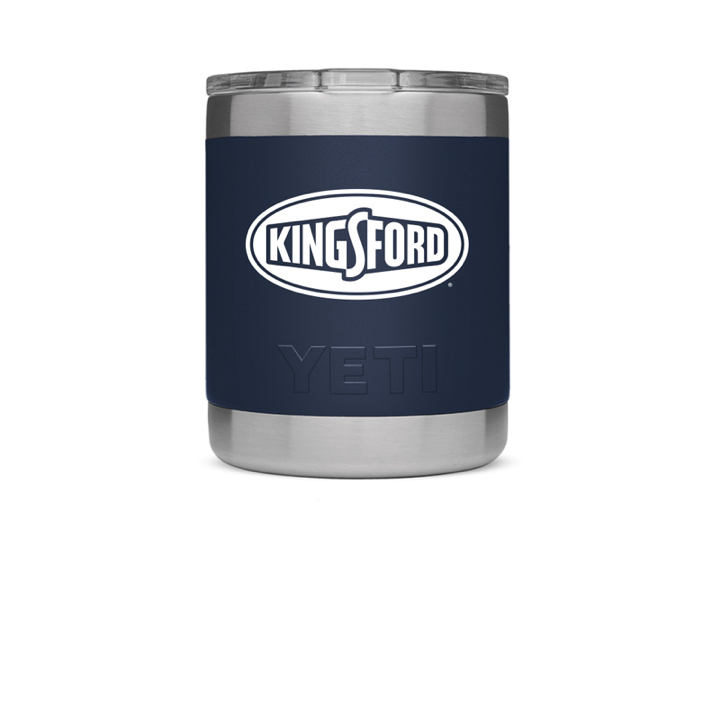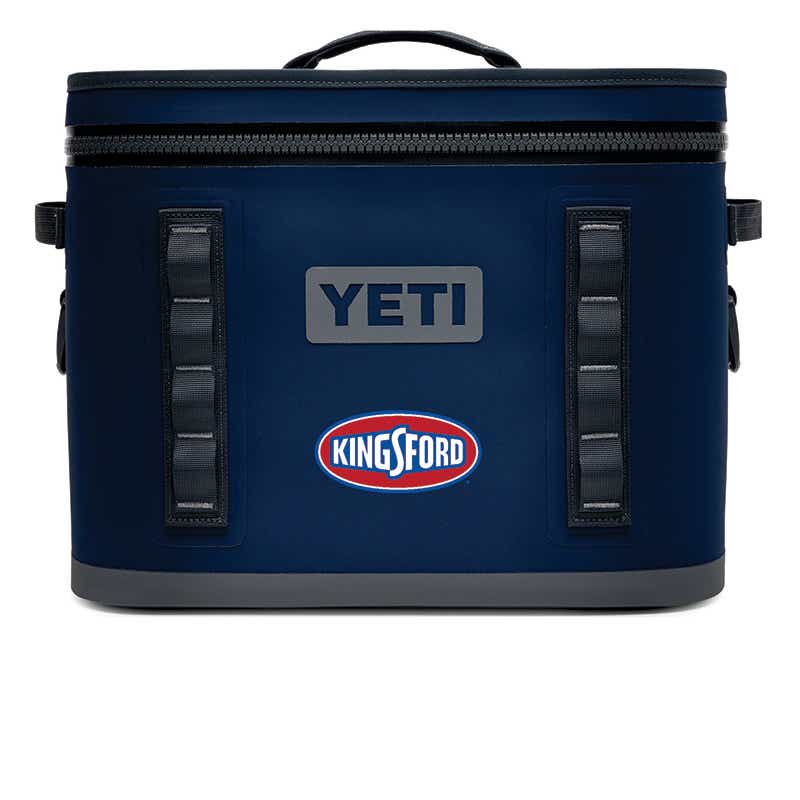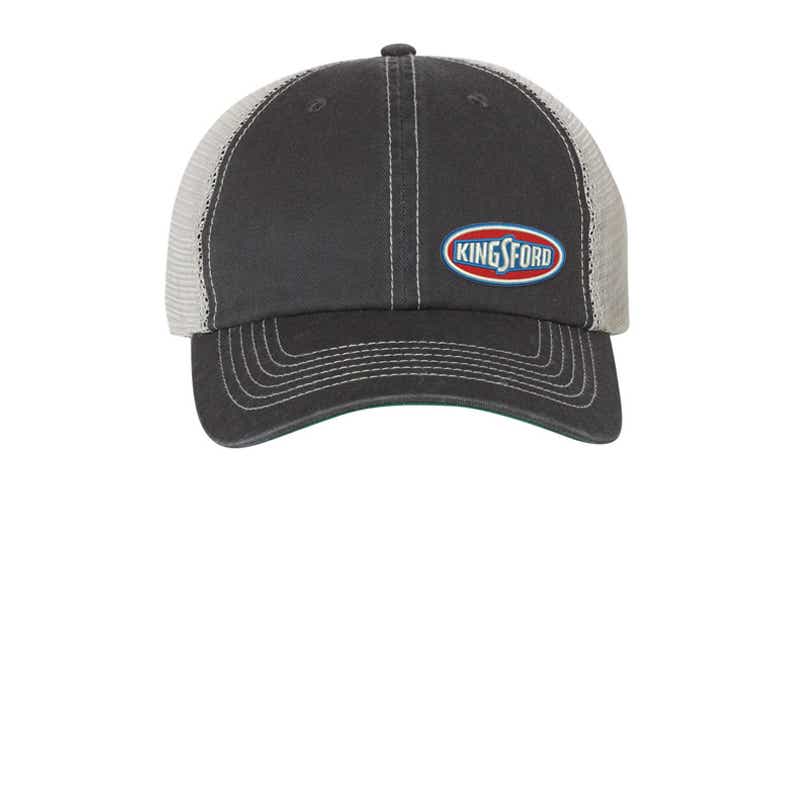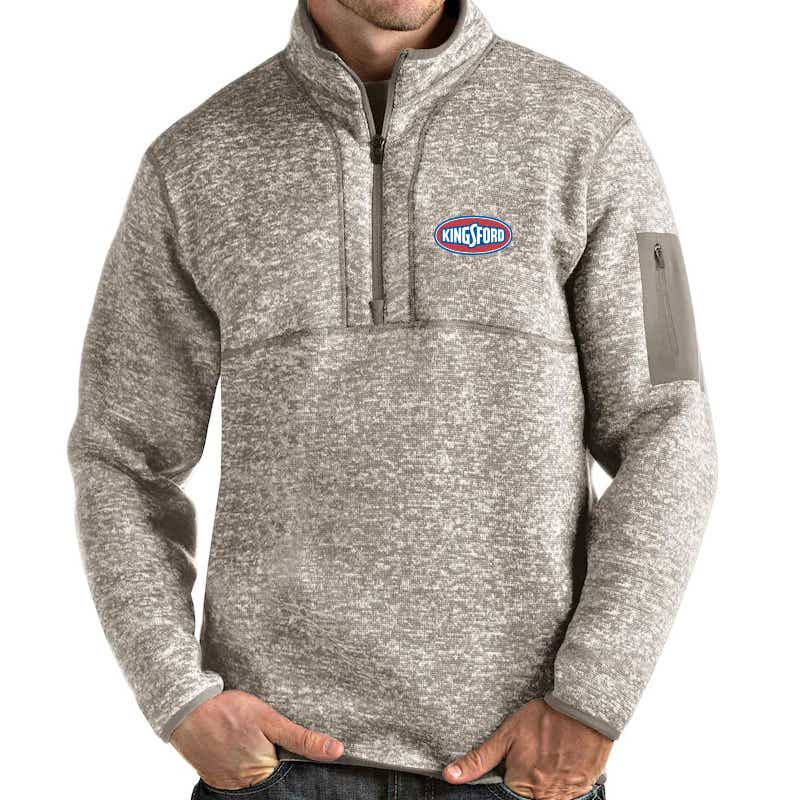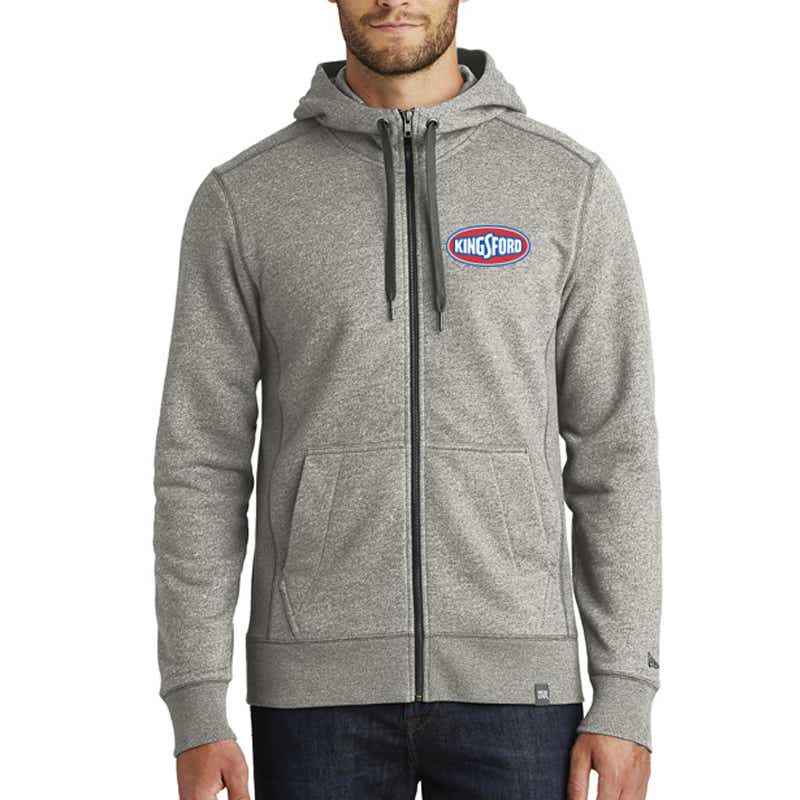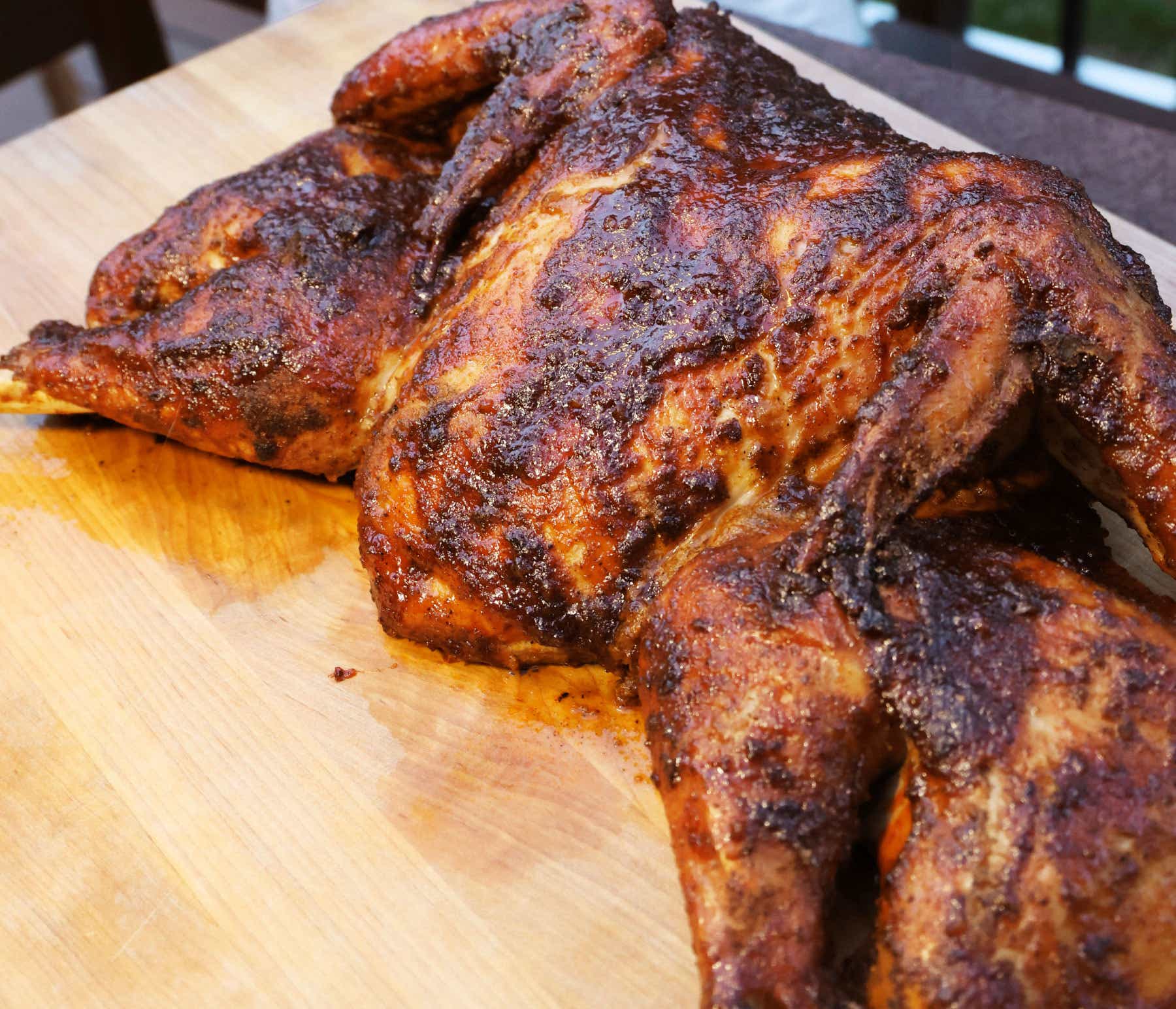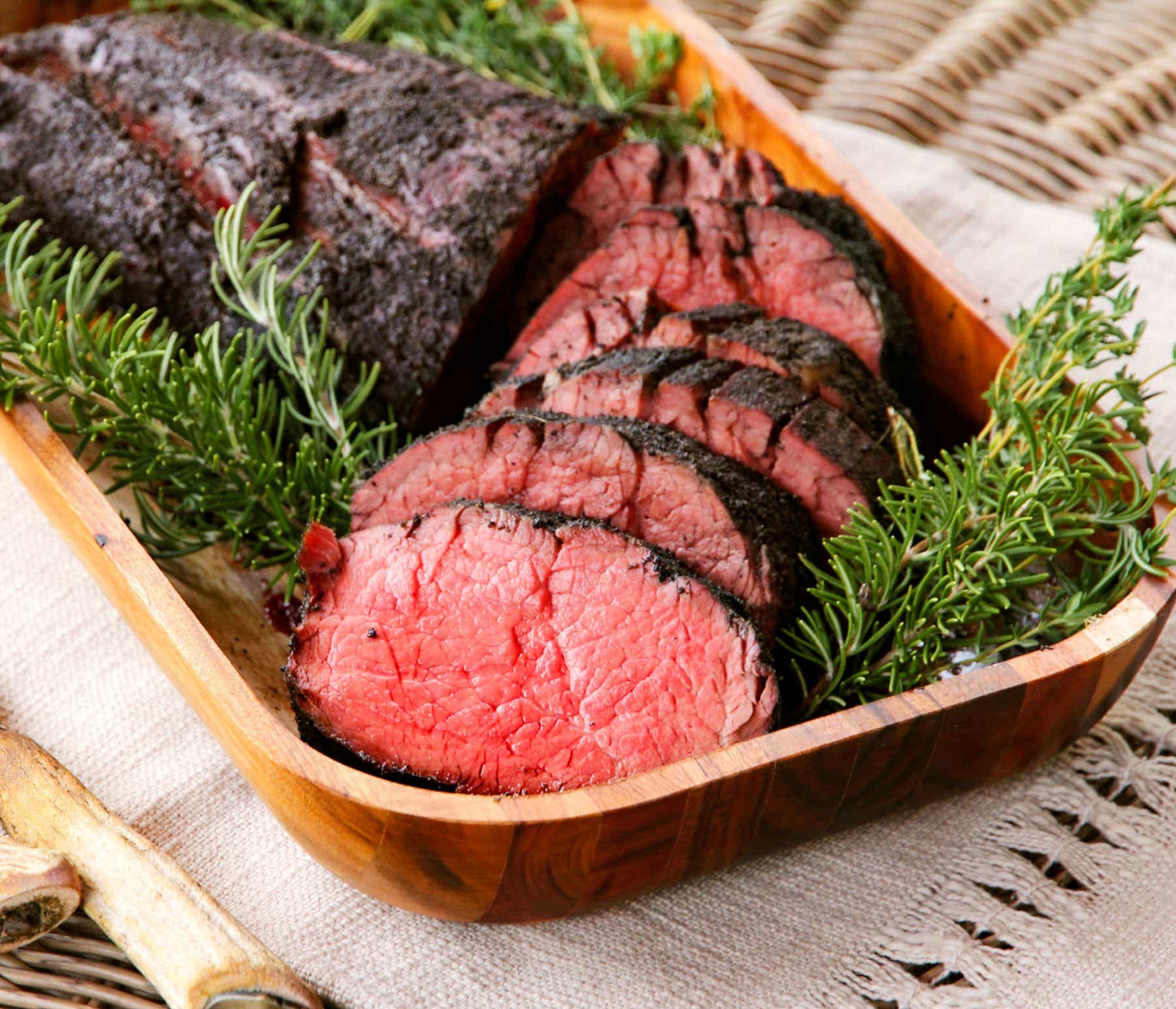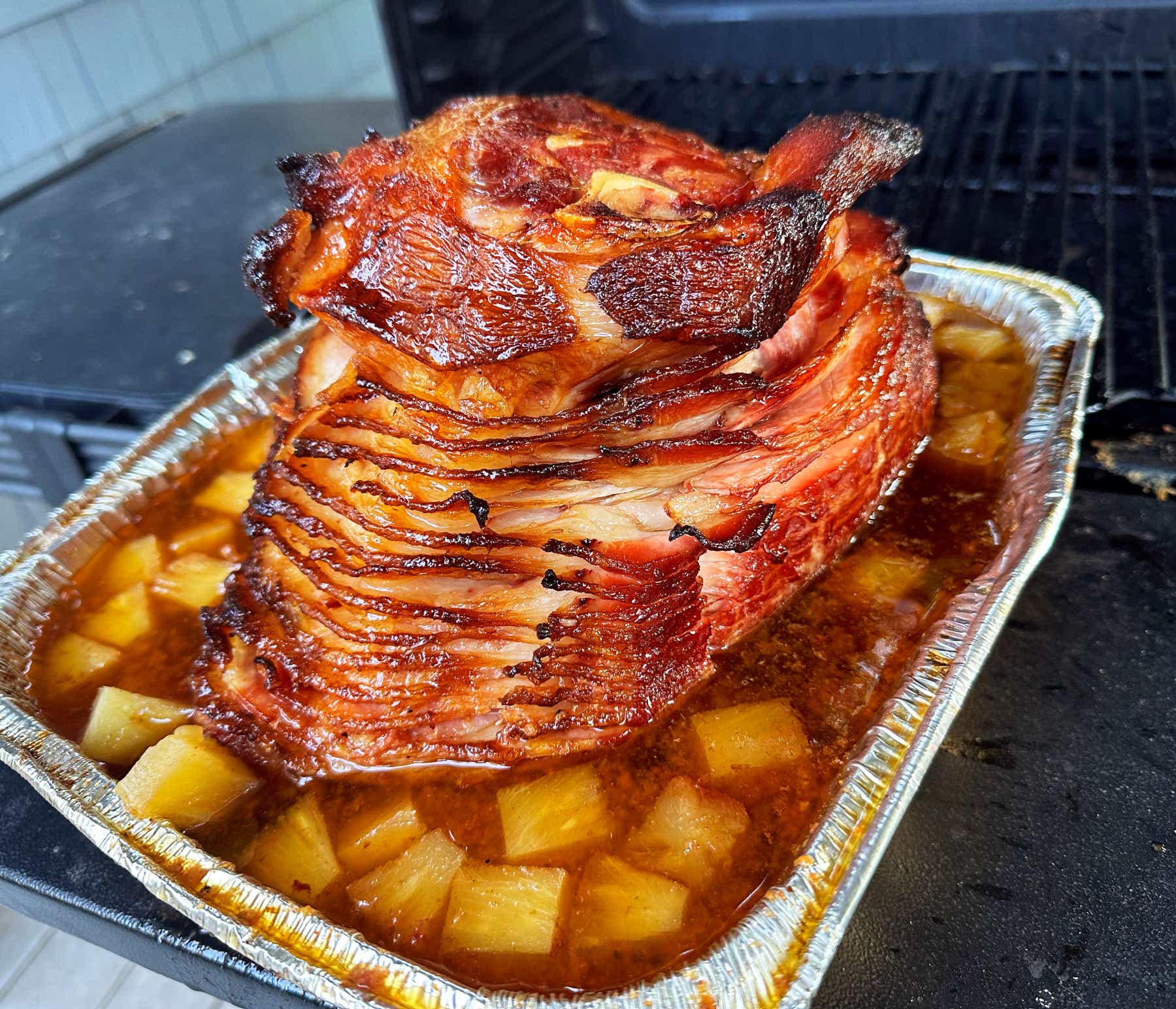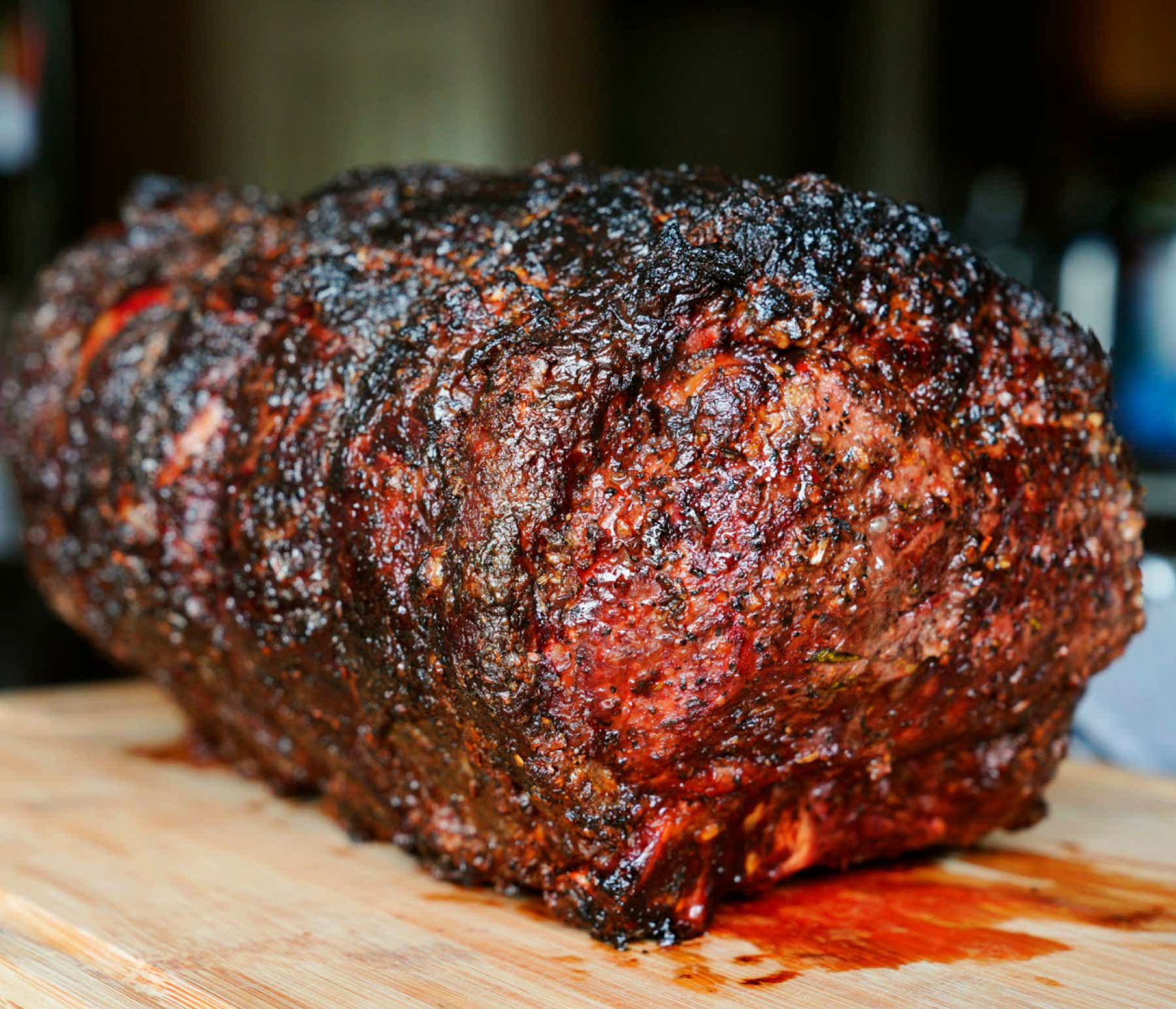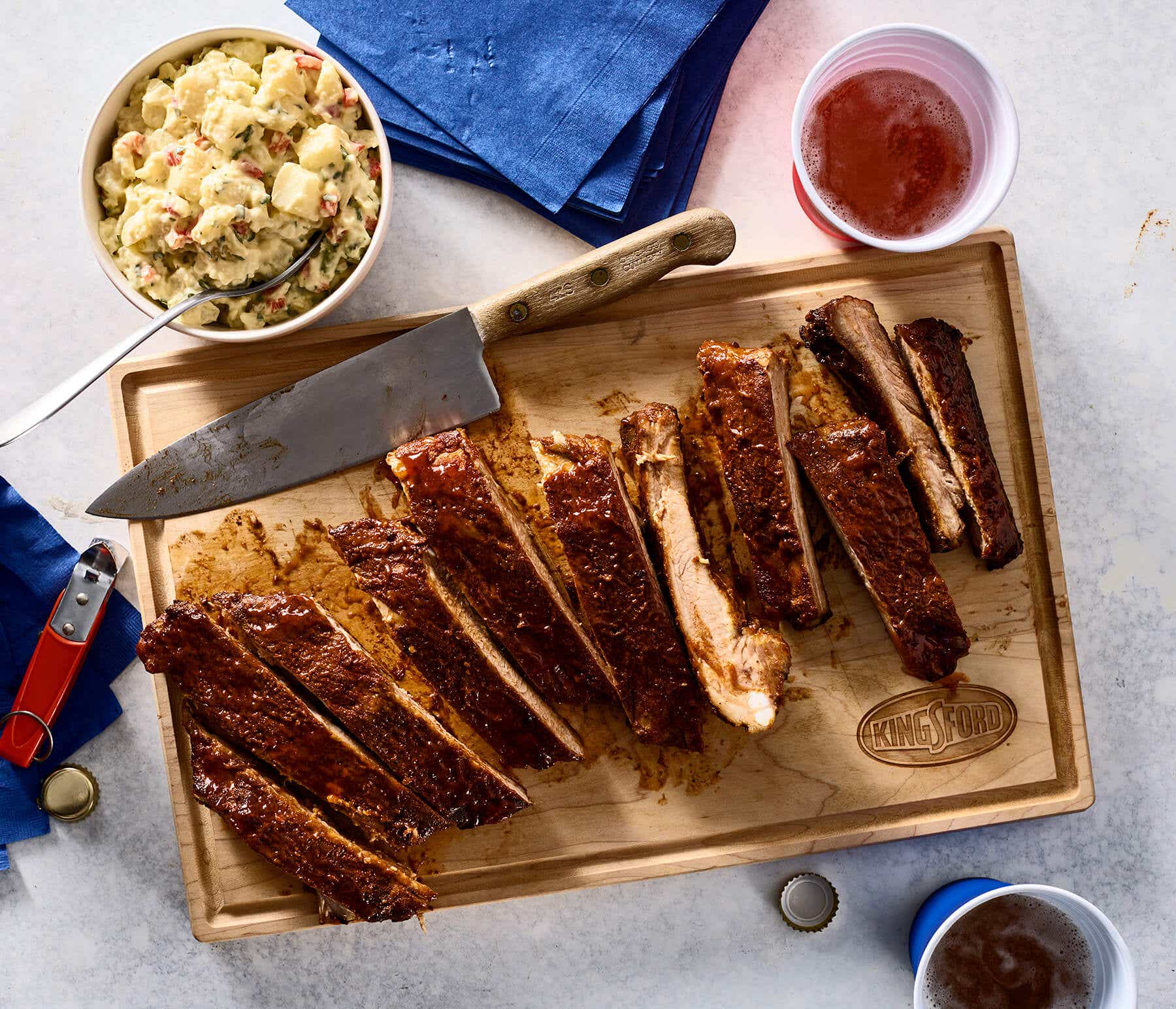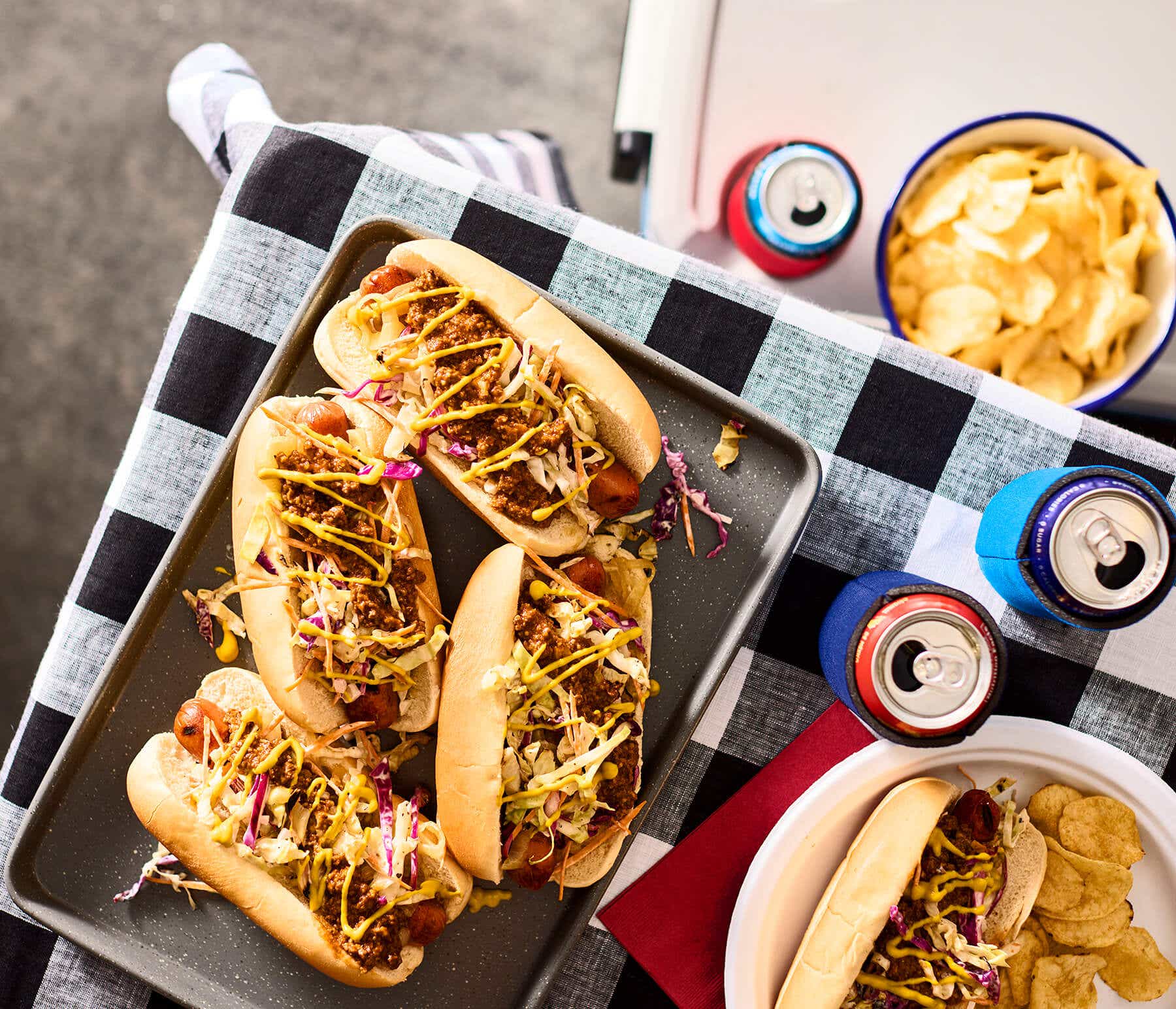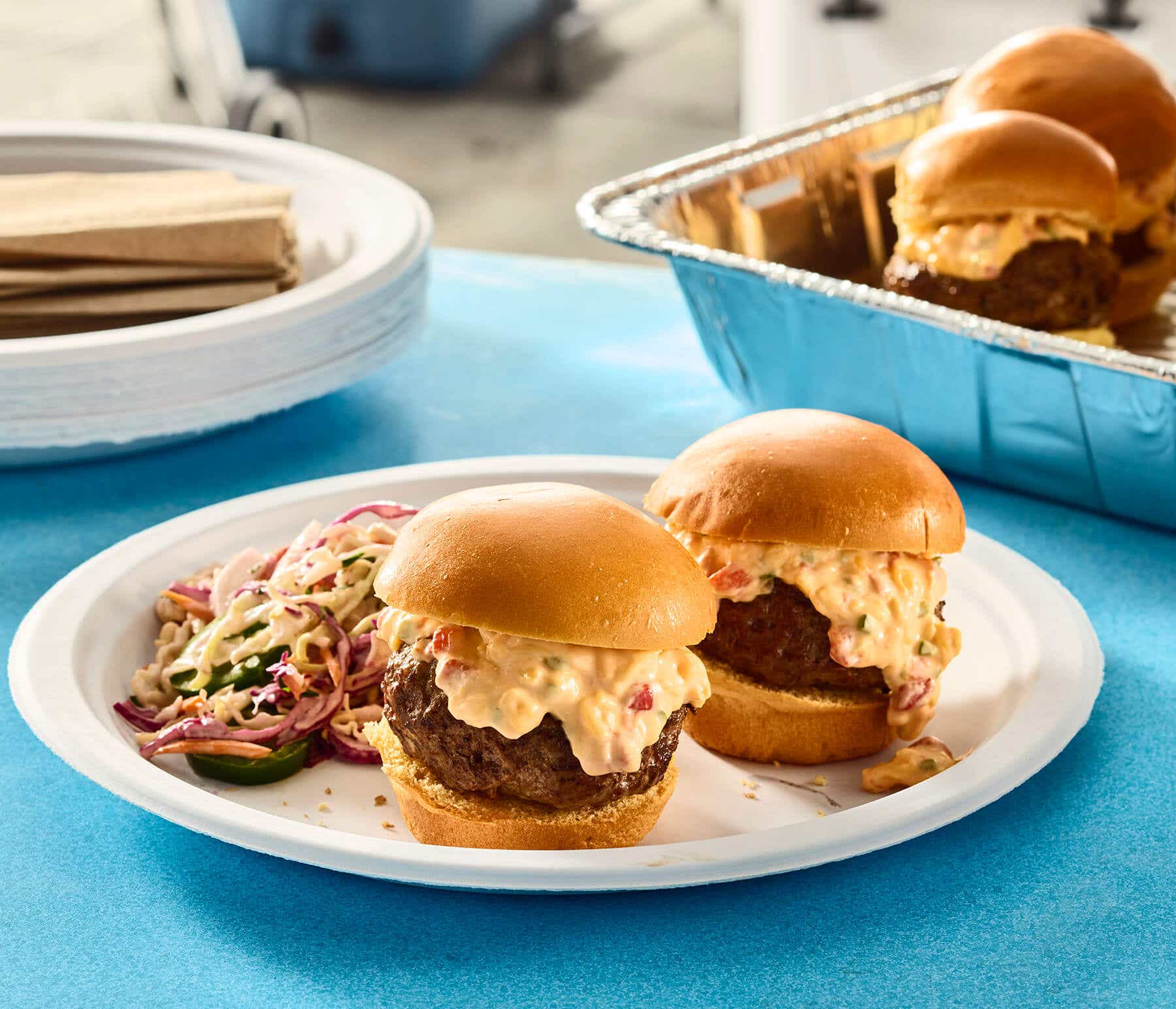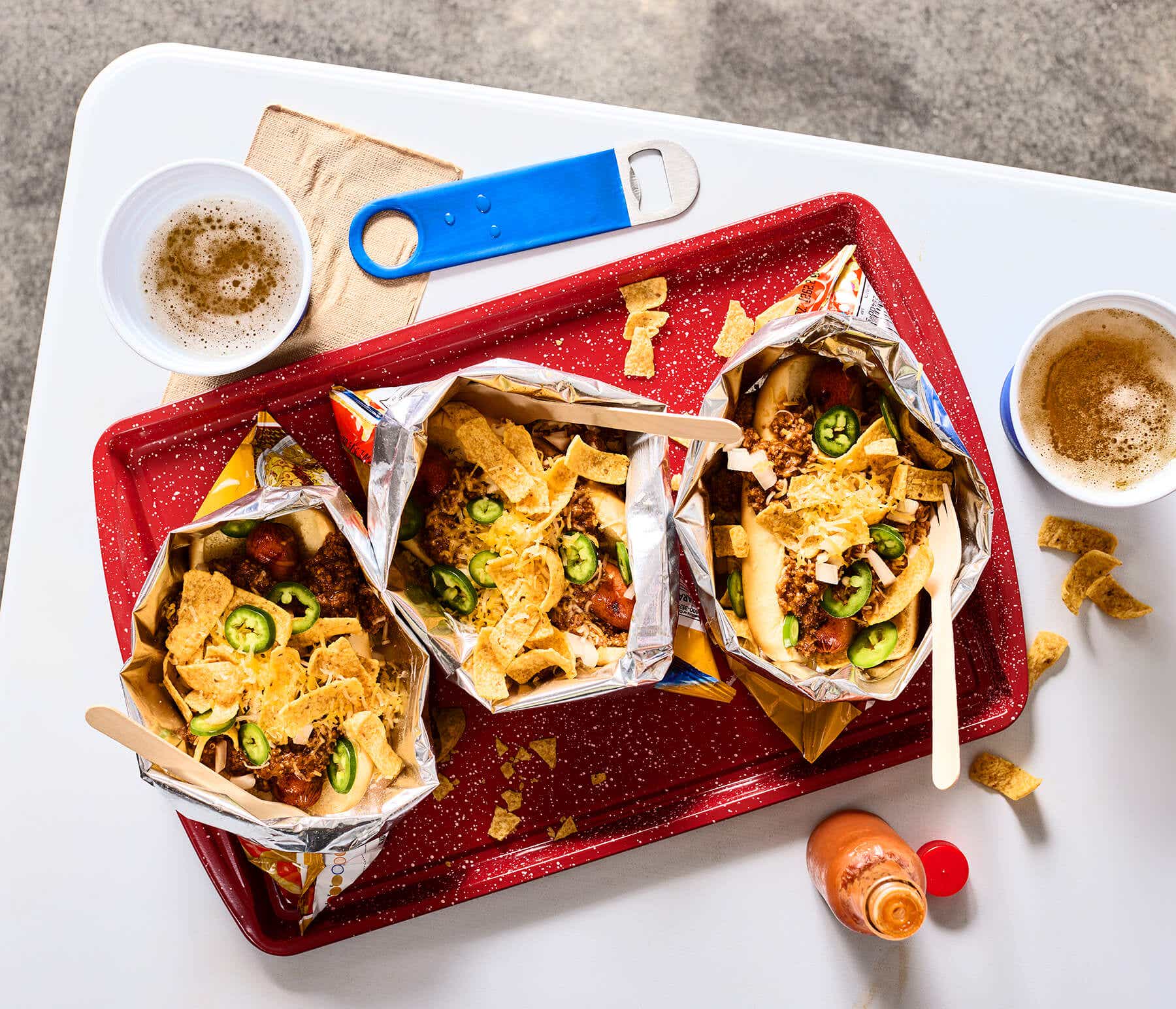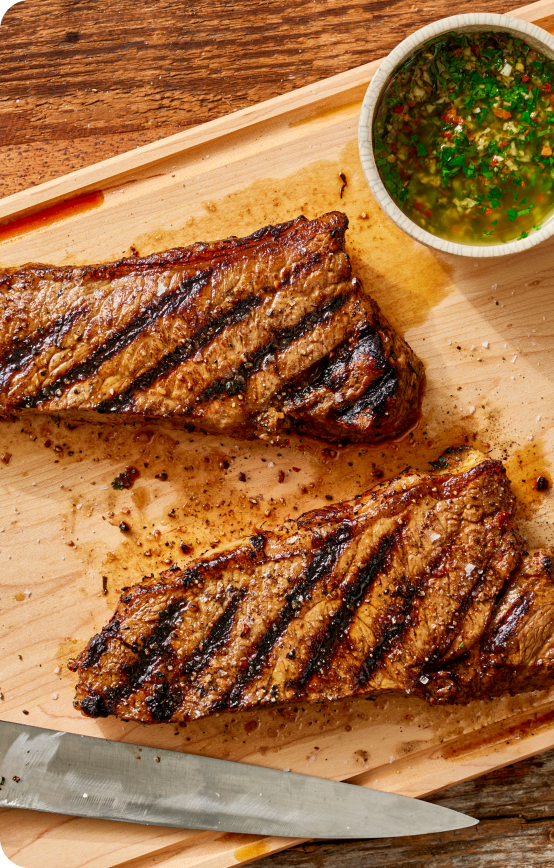How to Smoke Foods on a Charcoal Grill
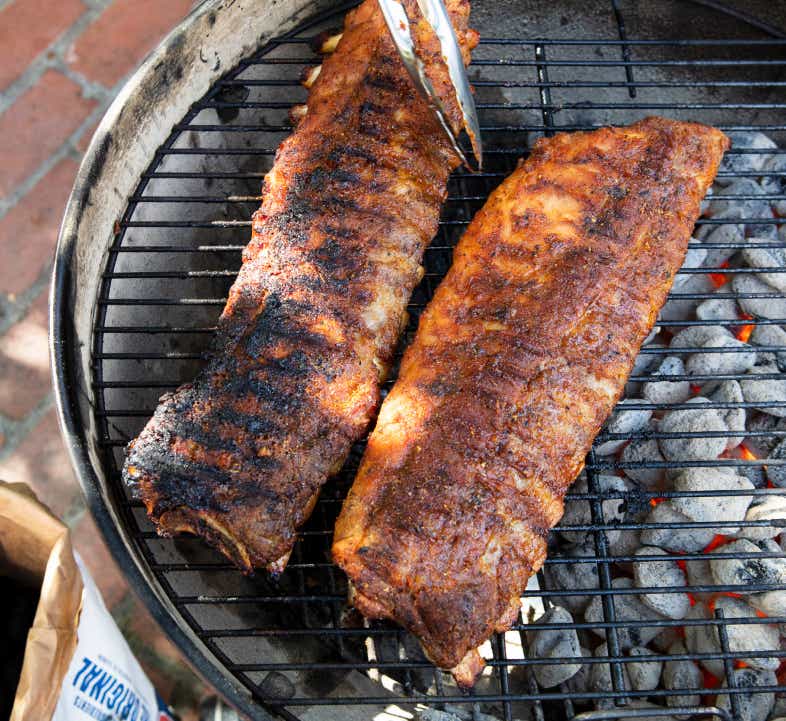
Traditional BBQ is smoking. The real deal is meat that’s cooked at low temperatures, over live coals, with hardwood added to create that delicious smoky taste. Whether you own a dedicated smoker or a standard kettle grill, it’s a technique anyone can master.
Step 1. Prepare the coals for a long, slow cook.
Smoking is a form of indirect cooking and usually takes place over a period of hours over low temperatures. Use indirect coal configurations and a combination of lit and unlit coals to keep the fire burning over a long period of time. Let’s take a look at a few of those smoking methods.
Method 1. Two-Zone Fire: Parallel Configuration
Light a full chimney of charcoal and pile the lit coals on either side of the grill, leaving a space in the center void of coals. Place a foil pan with hot water in this empty space to help regulate temperature and add moisture to the grill.
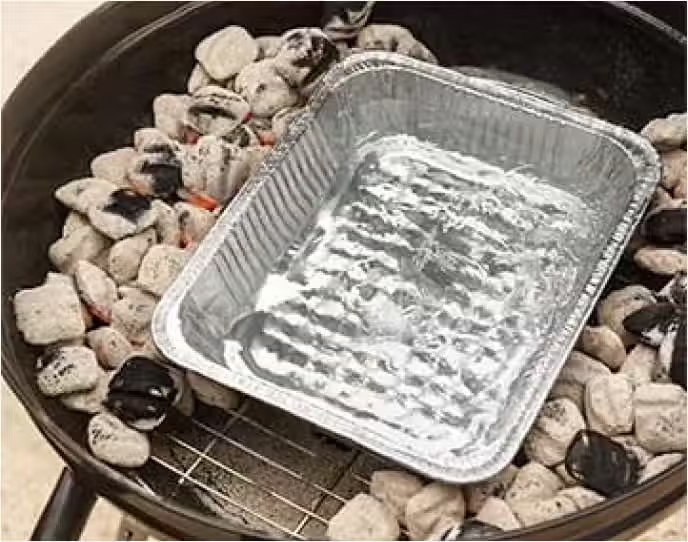
Method 2. The charcoal snake
A popular method for long, slow smoking in a kettle grill. Lay out unlit briquets in two rows along the outer edge of your grill ¾ of the way around. The two rows will form what looks like the letter C along the edge — some people think it looks like a snake, hence the name. Add soaked wood chips or chunks over the line of coals for that extra smoky taste. Place a foil pan with hot water in the center of the snake. Then light about six or eight briquets in a chimney.
When ready, pile all of the lit coals at the head of the charcoal snake. The coals will burn slowly down the line for hours on end. Wait a few minutes, then add your meat for a long, slow smoke. If you need more time, you can always add more briquets to the end of the snake.
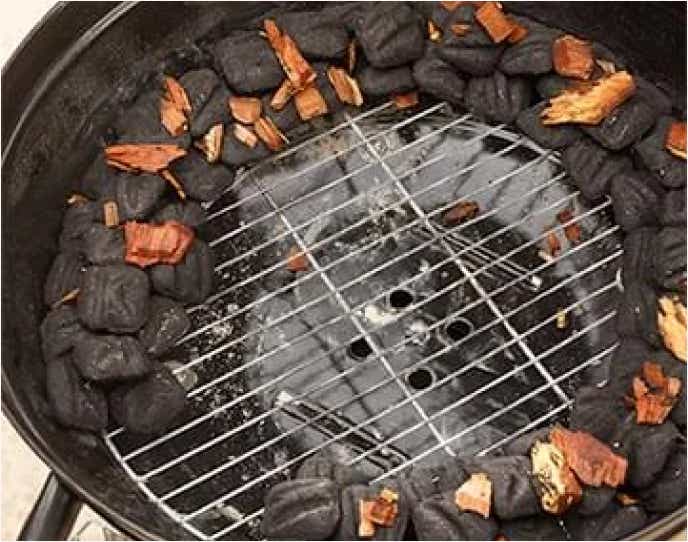
Method 3. The burn-down method for smokers
The burn-down method is a great way to cook slow and low if you own a smoker. Fill the charcoal bed with unlit coals and add only a few lit coals to the very top. The coals on top will slowly light those below them and burn down slowly over time.
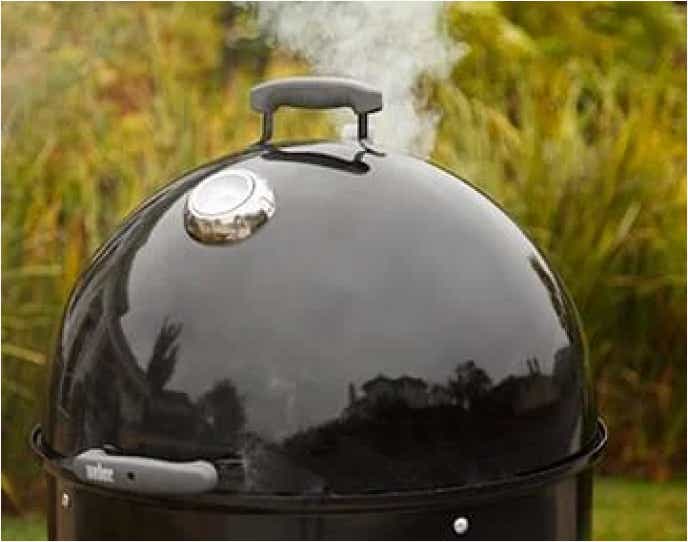
The Importance of the Water Pan
Most dedicated smokers have a water pan built in. For smoking on a kettle grill, it’s important that you add a foil pan with hot water. Fill the pan with 2 to 3 liters of water — or if you’re feeling adventurous, you can experiment with beer, apple juice or wine.
The water pan creates a hot, moist environment, which is critical for smoking. More importantly, the water pan retains heat and helps stabilize temperatures to avoid the sometimes-dramatic fluctuations that happen when smoking on a kettle.
Step 2. Add Smoke Wood
Hardwood smoke gives BBQ extra flavor, so try using some wood. You can use larger wood chunks, or convenient Kingsford® Chips ‘n Wood Chunks that have been soaked in water. Different woods impart different flavors. Hickory, mesquite and oak wood impart a bold flavor for meats like beef and pork. Apple, cherry and other fruit woods are milder and are ideal for pork and chicken.
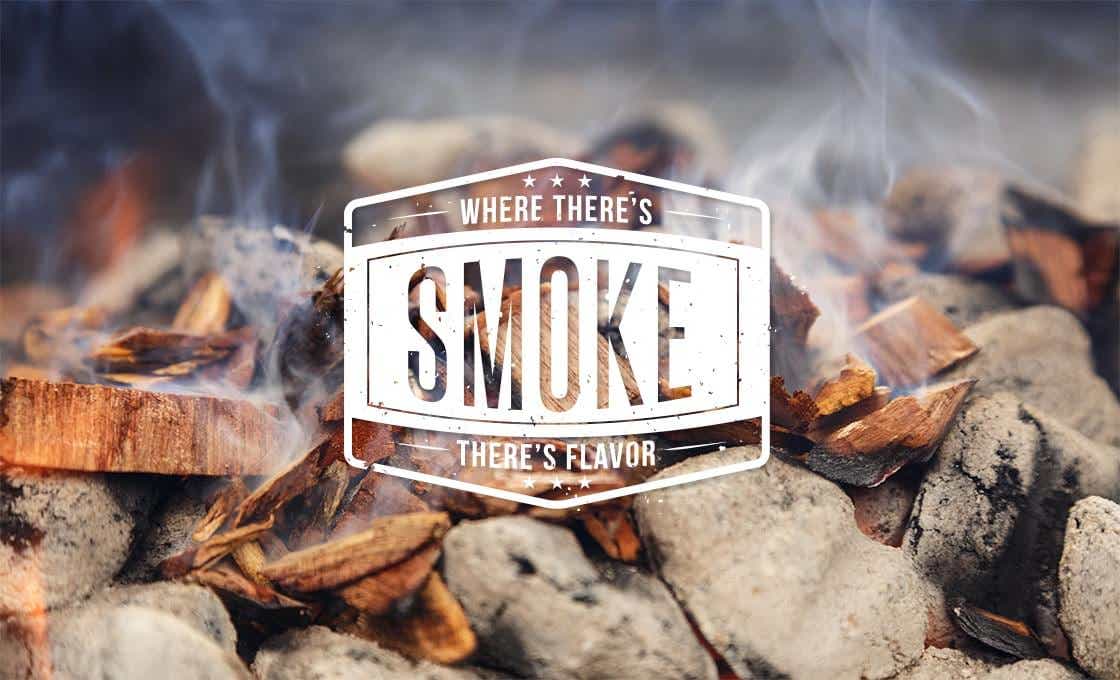
Step 3. Smoke at 225°F to 250°F
Consistent temperature is the key to smoking. The ideal temperature range for most smoking is 225°F to 250°F. A simple way to monitor temperature is to place a meat thermometer in the top vent of your grill, so the probe hangs down and measures the temperature of the air inside the grill.
If your temperature is above 250°F, close down the vents to reduce the amount of oxygen in order to reduce the temperature. If your temperature dips below 225°F, open up the vents fully to allow more oxygen in to increase the temperature. You can learn more about temperature control here.
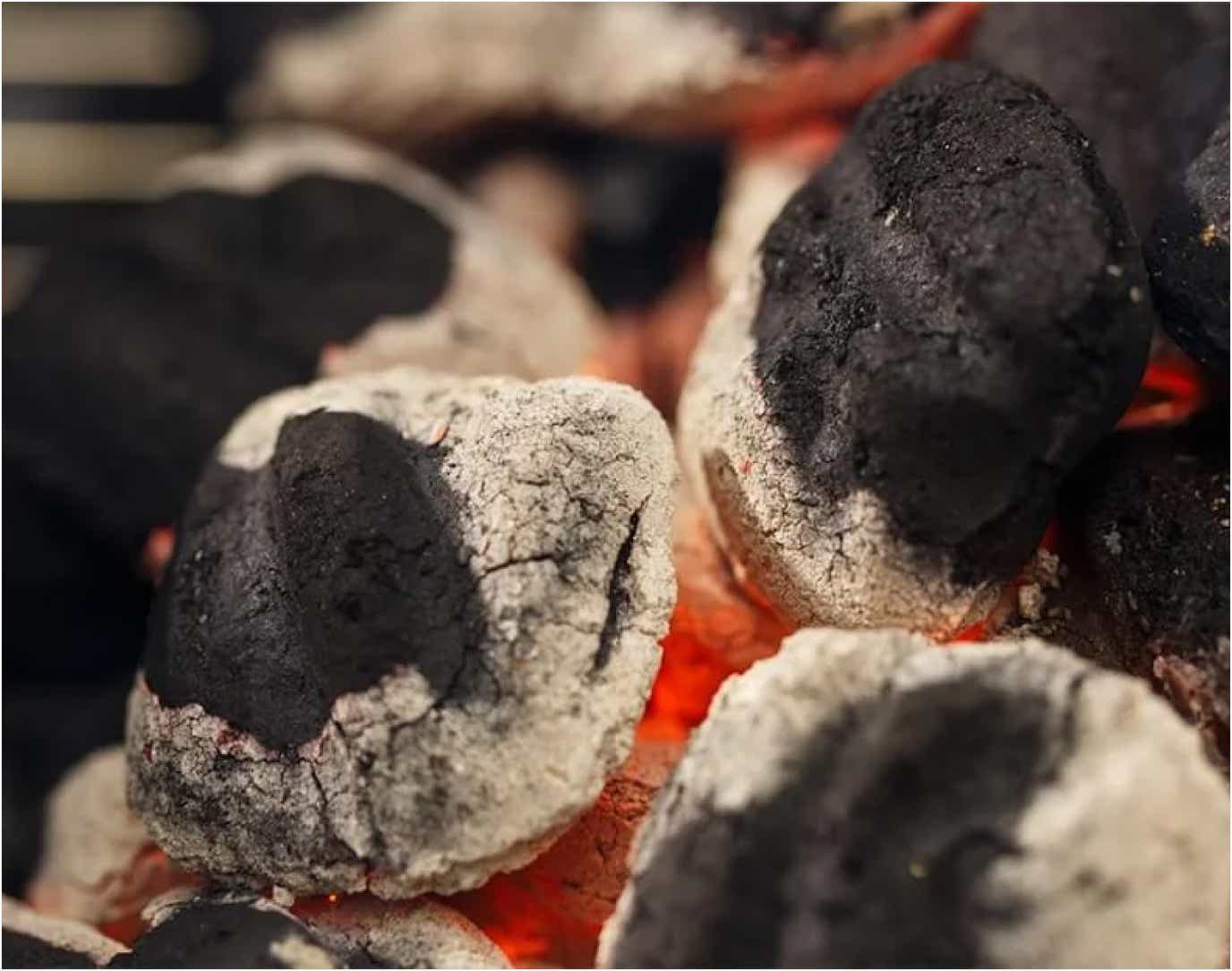
Step 4. Keep the Fire Burning
Ribs, brisket and pulled pork take hours to smoke properly, so adding more coals will typically be necessary. There are two strategies for adding coals.
The first way is to add more unlit coals, which you can do when you see temperatures begin to dip. Just add unlit coals; the lit ones will start them gradually.
The second strategy is to add lit coals, which is important when the temperature drops below 225°F and you need to increase it quickly. Keep a chimney at the ready to fire up a new batch of lit coals, and pour them carefully into your cooker or add them with tongs.

Step 5. Don’t Peek!
Perhaps the most difficult part of smoking is not lifting the lid. Every time you peek, you let valuable heat and smoke escape. Resist the temptation — we recommend biding your time by enjoying a tasty beverage and/or playing cornhole. Leave the lid on to avoid wild temperature swings or burning out your coals too quickly. Lift the lid only when you need to check the internal temperature of the meat or add more coals.

